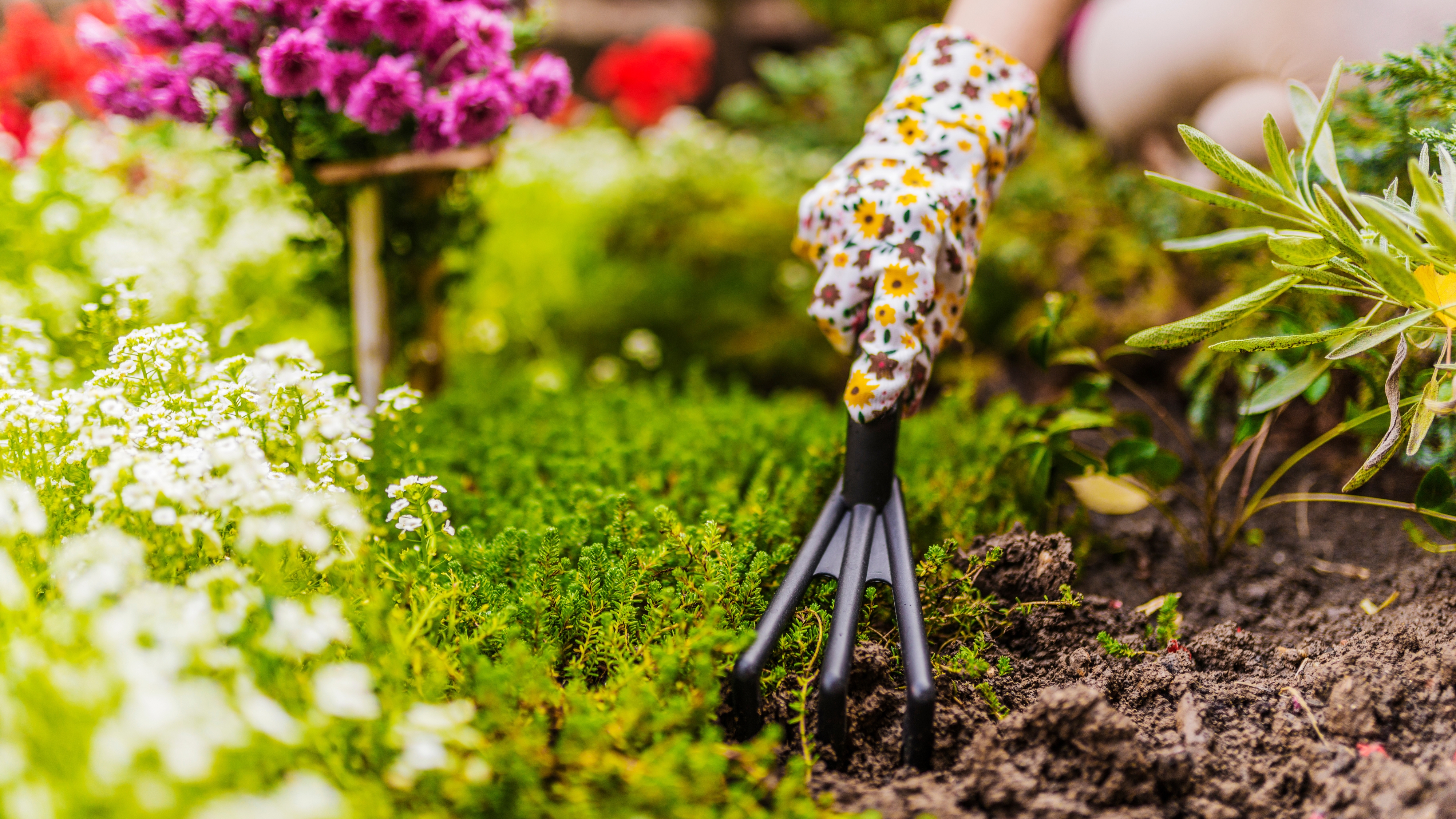

Rachel Homer
A gardening jobs calendar is essential for all types of outdoor space. Most especially, if your backyard is blooming with delicious vegetable plots and beautiful planting. To ensure that your kitchen garden delivers the best crop, to see that wildlife enjoys the best habitat and to help keep your garden tidy and manageable, it's crucial to bring a little structure to every passionate gardener's routine by following your gardening calendar.
All gardens – big and small – need maintenance, even if it is just pruning a few plants or repainting garden furniture for a brighter summer spent outdoors. However, with larger, more elaborate gardens, maintenance can become a year-round job, and important tasks can often be forgotten if you don’t have a schedule to run and complete gardening jobs by month.
That's where our monthly gardening calendar comes in handy, to help you decide which jobs you should tackle and when to turn your backyard ideas into reality. Follow our gardening jobs calendar for manageable month-by-month progress.
Gardening jobs calendar
Take a look at our 12-month gardening jobs calendar to find out which jobs require attention. When’s the best time to prune hydrangeas or oversee the lawn? Here’s our gardening calendar from January to December.
Gardening jobs to do in January
January may seem like the dead of winter, but there is a lot to be done in your winter garden during this month.

Plants
Your plants will need protection and maintenance during this time of year. Brush snow from evergreens and conifers to stop the branches from bowing, breaking, or splaying out under the sheer weight.
If wet weather conditions have made ornamental grasses and other perennials fall flat, start cutting these back to give them a fresh start.
Are you thinking of what to plant in January? Bare-rooted fruit trees can go in the ground and there are plenty of vegetables that can be sown including onions, broad beans, garlic, and chillies.
“Use this quiet gardening month to plan your garden layout and order seeds. Check for any seed catalogs and make sure to choose varieties that suit your climate," says Tony O'Neill, Gardening Expert and Best-Selling Author at Simplify Gardening.
"Suppose you forgot to plant daffodils and tulips in the fall, fear not. They are extremely hardy so it’s not too late to plant them out now ready for shooting in spring."

Tony O'Neill is a gardening expert with a thriving YouTube channel that has 434,000 subscribers and receives over 1.4 million monthly views. Through his award-winning website, simplifygardening.com, Tony shares his passion for gardening and sustainability. Tony has also published various gardening books on vegetable gardening and composting.
Protect
After plenty of rain, mulch beds and borders with leaf mould, manure, compost or shredded bark – a layer of around five to 10cm is ideal. Check protective fleece and straw is covering still-tender plants such as tree ferns.
Feed
Feed new plantings in late January with slow-release fertilizers such as Blood, Fish and Bone, and water, but leave the application of faster-acting organic fertilisers such as Growmore until the beginning of March.
Wildlife also will benefit from your help at the beginning of the year. Start putting food and water in your garden for hungry and thirsty birds. To stop ponds and bird baths freezing over, leave a tennis ball to bob on top of the water.
Tidy
January is also an appropriate time for tidying your garden and maintaining and repairing your garden furniture and decking. Recycle cut trees by shredding them for mulch or compost. Repair and stain or paint fences, pergolas and wooden furniture if weather conditions permit.
Scrub slippery garden decking and paving with hot soapy water; Algon Organic Path and Patio Cleaner is useful for dirtier surfaces. Ventilate greenhouses and conservatories on hot sunny days, and wash the glass of the greenhouse to let in more light.
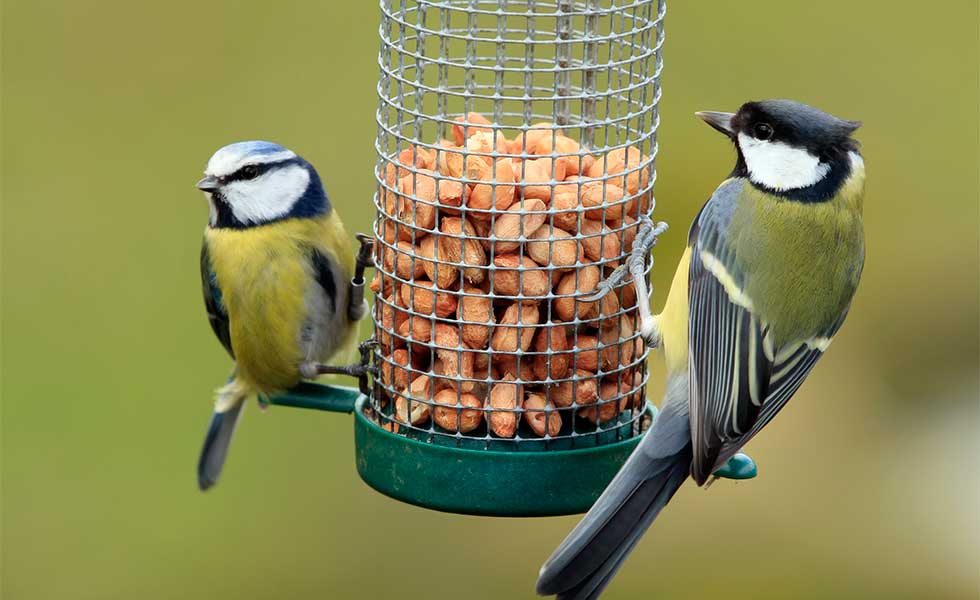
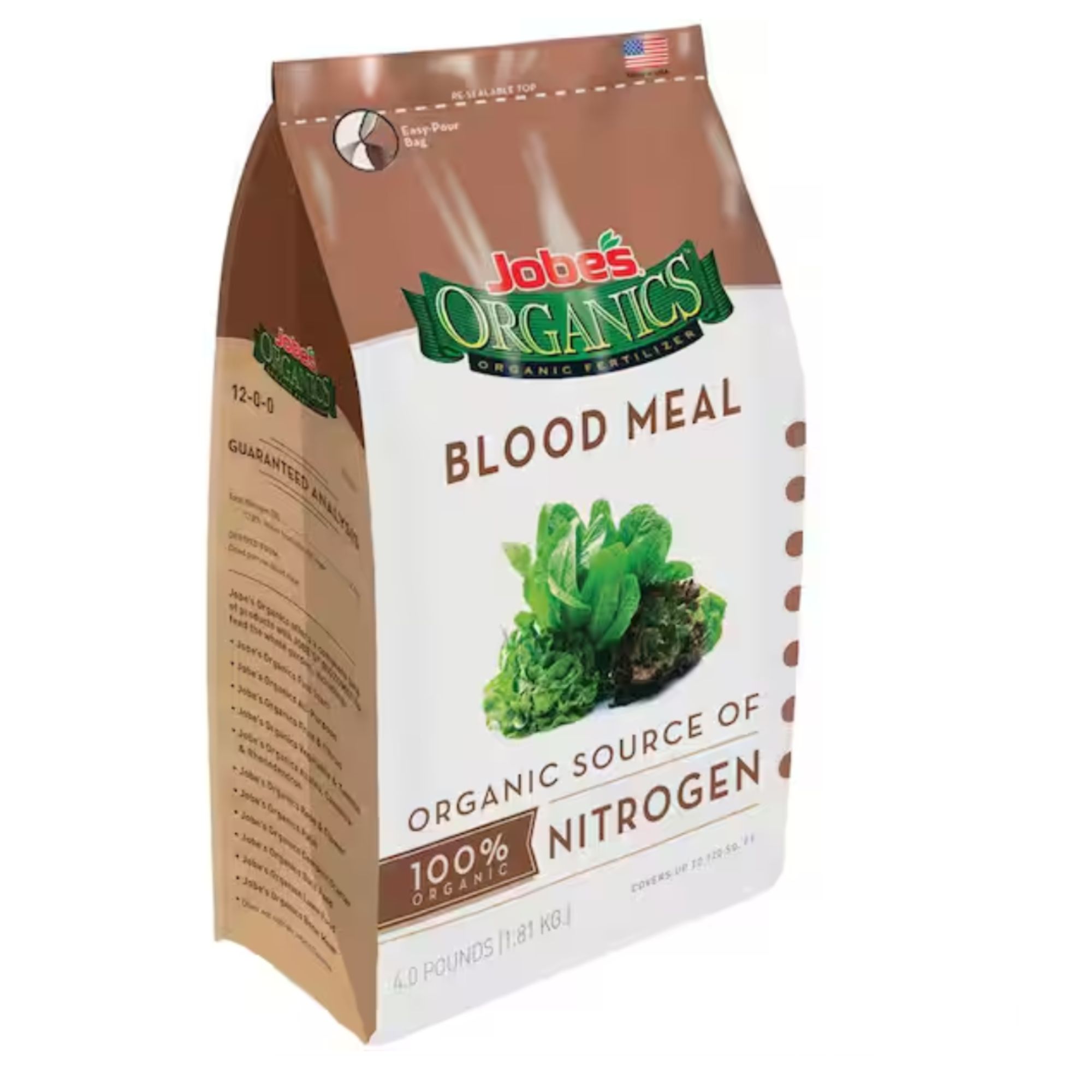
Price: $12.39
Jobe's Organics Blood Meal Granular comes in a 3lb bag and is an easy and natural way to provide green, leafy vegetable plants, ornamentals, trees, and shrubs. 100% organic blood meal. It's OMRI certified which means there are no synthetic chemicals. It scores 4.5 star reviews and customers like how fine the grind is.
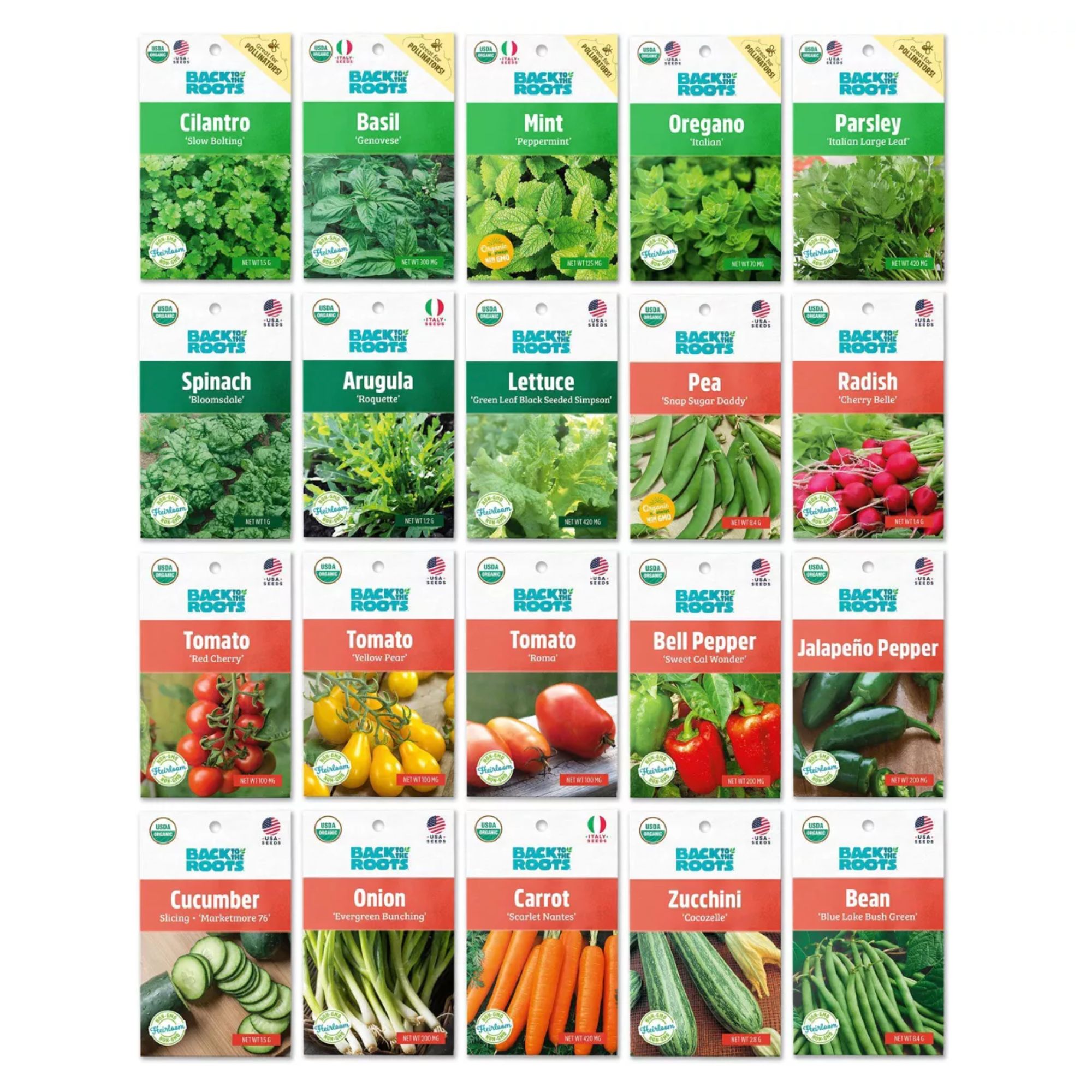
Price: $30.49
This 20 pack of various herbs and vegetables scores 4.9 out of 5 stars in customer reviews thanks to the incredible variety. For ideal beginners, the 100% Organic and non-GMO herb and vegetable seed starter pack, features easy-to-follow instructions
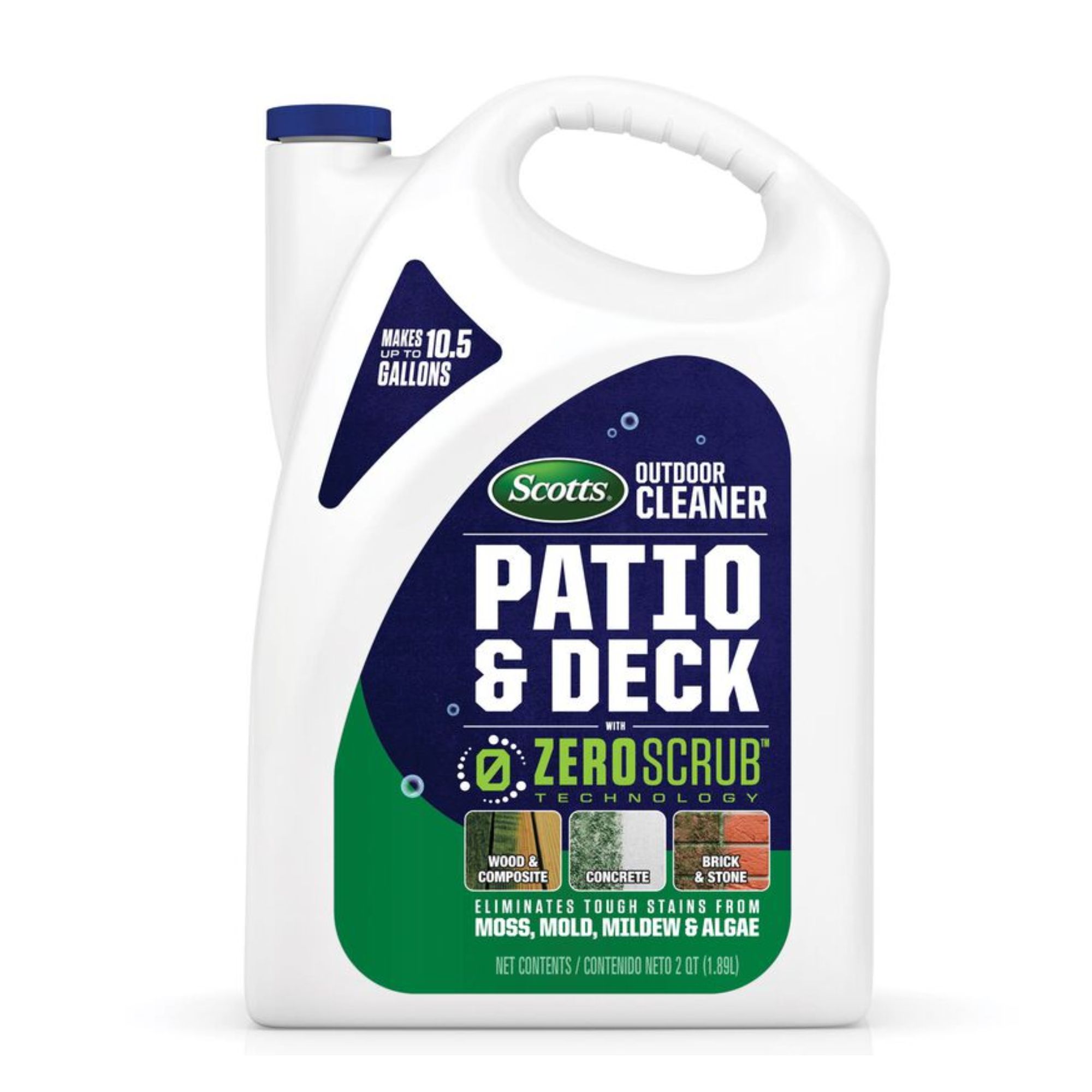
Price: $32.95
Once mixed with directions, Scotts Outdoor Cleaner Patio & Deck with ZeroScrub Technology will not disappoint. Spray onto affected areas and simply wait for your patio transformation. No power washing or scrubbing is needed to remove stains on vinyl, stucco, wood, composite wood, shingles, stone, cement, brink, and many more surfaces.
Gardening jobs to do in February
A lot can be achieved from your gardening jobs calendar during February, particularly on days when the ground isn't frozen or waterlogged.
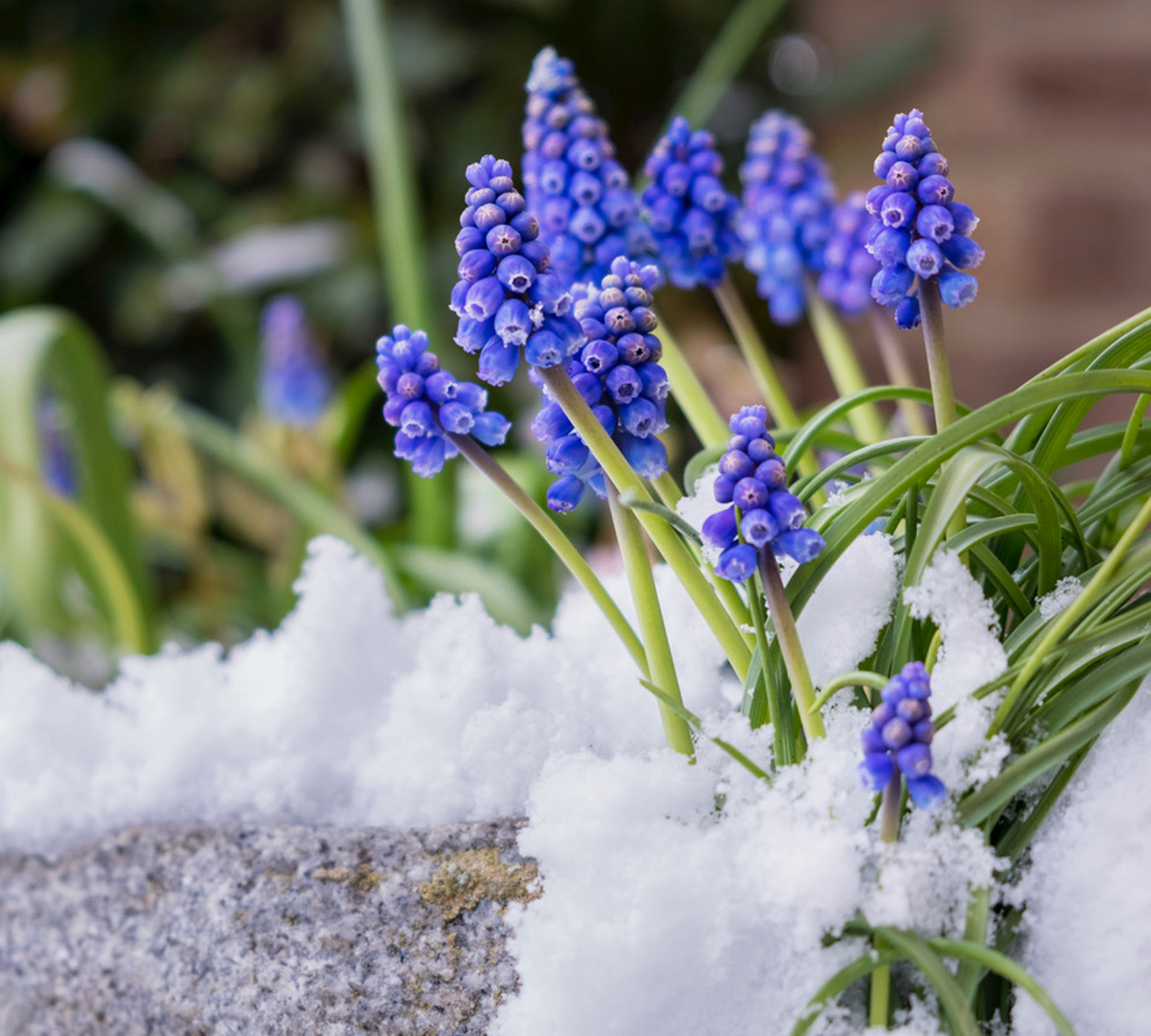
Plant
If you haven’t already, plant bare-root trees. Also, shrubs, and ‘in-the-green’ snowdrops (snowdrops with leaves) can be planted.
This is also a good month for planting Jerusalem artichokes, shallots, raspberries, and blackberry canes if weather conditions permit.
Greenhouse sowing can include hardy vegetable crops that do well in colder conditions.
"Begin sowing seeds indoors for cool-season crops like lettuce and broccoli. Use a seed-starting mix and provide plenty of light to encourage healthy growth,” explains Tony O'Neil.
Plant maintenance
In terms of plant maintenance, now is the time on your gardening calendar to cut back deciduous grasses, ideally down to 15-20cm before new shoots emerge.
Deadhead winter bedding plants for bushier displays later in the year, and start preparing seed beds for spring vegetable sowings.
Prune
February is also the time to hard-prune your hedges if you didn't do it in the autumn. Deciduous garden hedges can all be cut back fairly hard now.
Make sure the frosts haven’t lifted newly planted trees and shrubs. If so, re-firm around them lightly using your hands or heels if necessary.
In terms of plant maintenance, now is the time to cut back deciduous grasses, ideally down to 15 - 20cm before new shoots emerge.
Deadhead winter bedding plants for bushier displays later in the year, and start preparing seed beds for spring vegetable sowings.
Gardening jobs to do in March
March is the time when your monthly gardening jobs will begin to speed up – this is the time for mulching, sowing, and repotting.
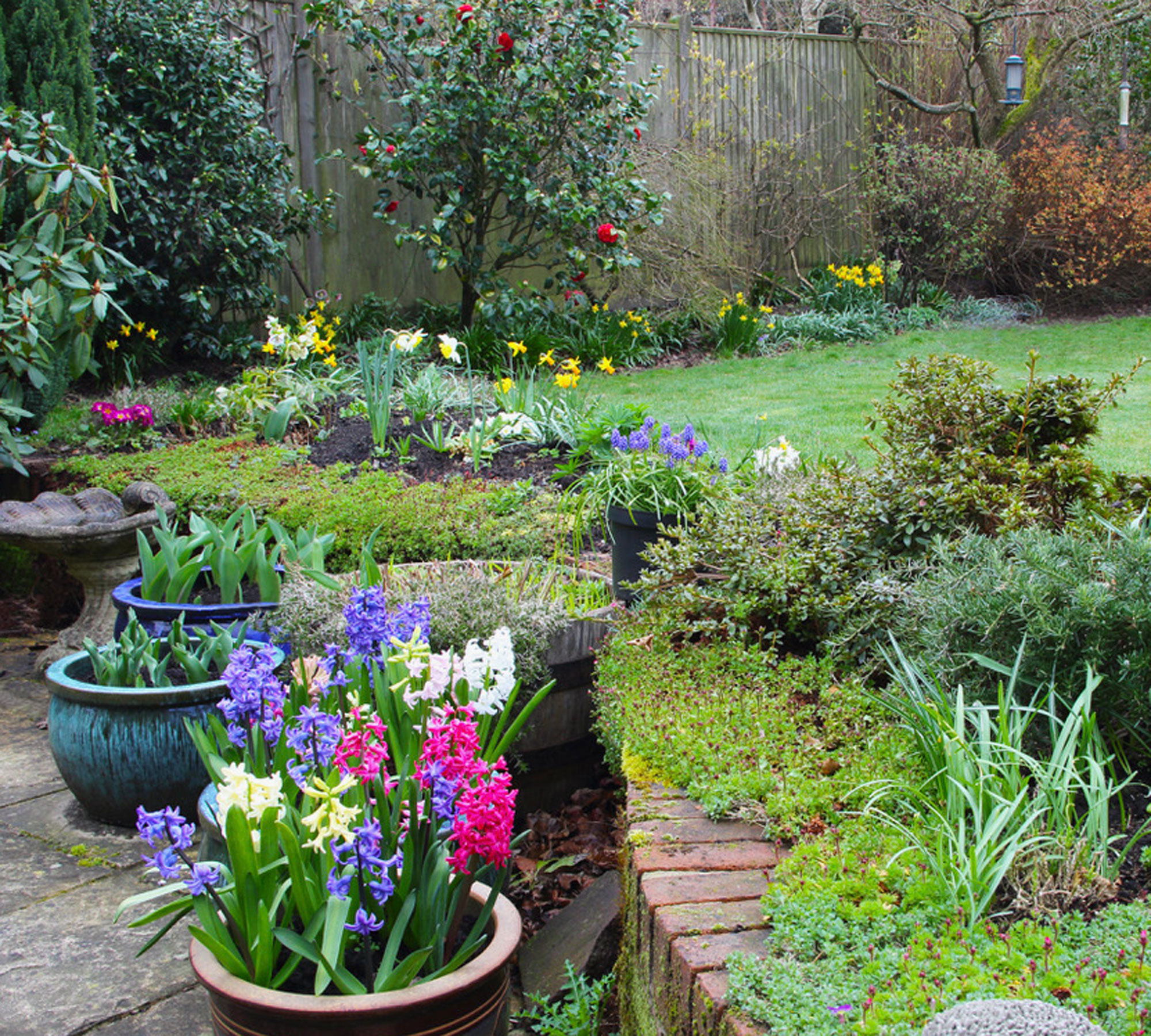
Deadhead and prune
Don't forget to deadhead early spring bulbs – but don’t chop back the leaves for at least six weeks after flowering. Hard-prune bush roses back to 30cm, cutting back to an outward-facing bud.
Remove seed heads of perennials and place ‘grow-through’ supports in position.
Weed and mulch
Remove weeds, then mulch beds and borders with shredded bark or compost to help stop them returning. Protect young perennials, such as hostas, with organic slug pellets.
Lawn care
March is the month-by-month point in your gardening jobs to pay more attention to the lawn. Start mowing your lawn each week if the grass isn’t wet. It is important to set your mower’s blade height as high as possible for the first four to five weeks.
Plant
Looking for what to plant in March? This is your last chance to plant bare-root trees, shrubs and roses until November.
Plant summer-flowering lily bulbs in a hole three to four times their height.
Sow
The most important gardening job in March is probably sowing.
Sow hardy annuals to fill gaps in immature beds and borders. Sunflowers, stocks, cornflowers and poppies can all be broadcast (scattered on the surface) onto raked soil or sown into drill holes.
Replace the compost in container plants and top-dress with slow-release fertilizer.
Vegetable and herb planting
Plant herbs in windowsill trays. Plan your kitchen garden and plant early potatoes, onion sets and asparagus, and when the weather is warmer sow onions, parsnips and the first carrots, turnips, beetroots and salad leaves of the season under cloches.
Sow celery, courgettes, tomatoes and cucumbers on a windowsill or greenhouse for planting out once all danger of frost has passed.
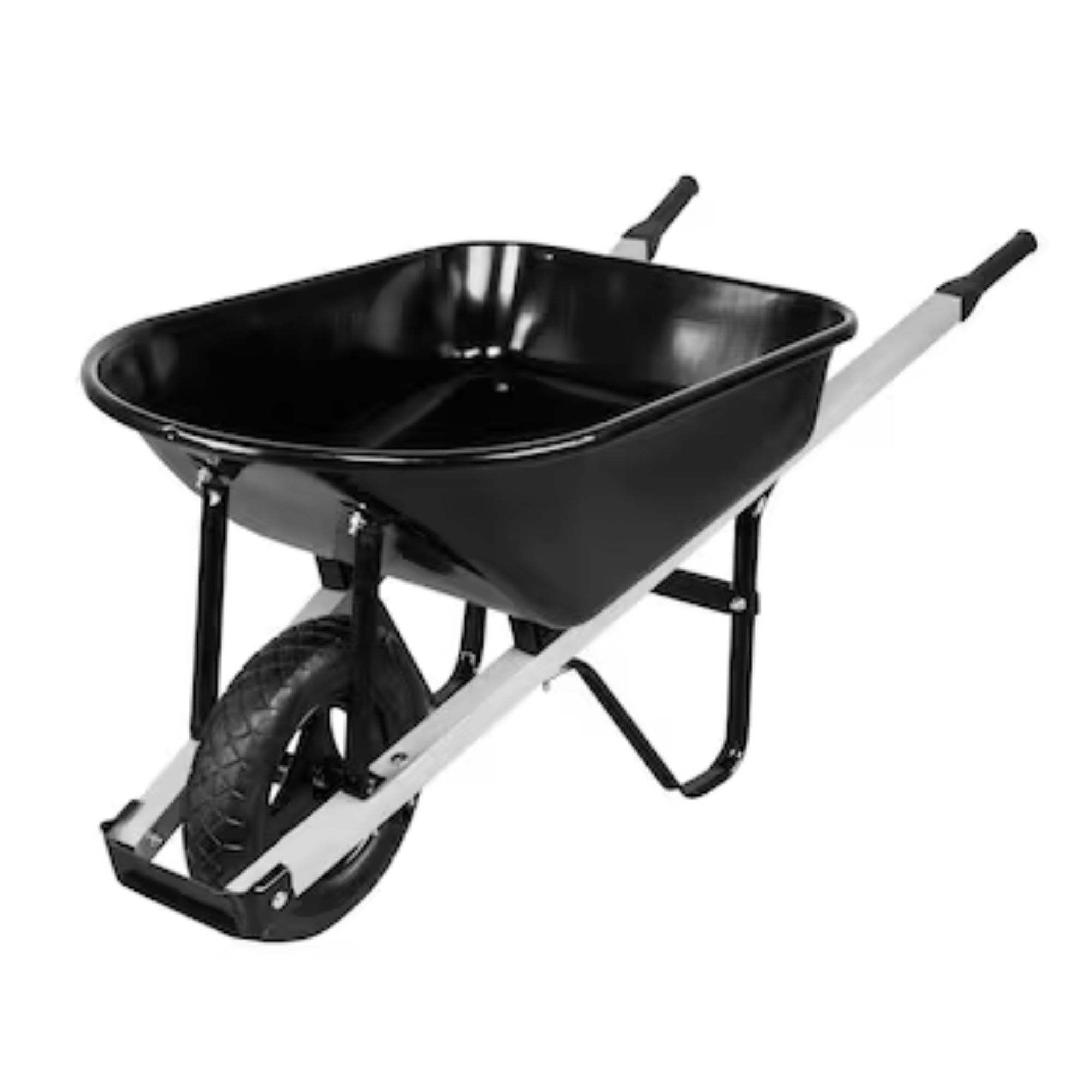
Price: $99
This Project Source wheelbarrow has a 5.5cf steel tray and is practical for both the homeowner and more advanced DIYer. Customers like its value for money and that it is sturdy and well-balanced.
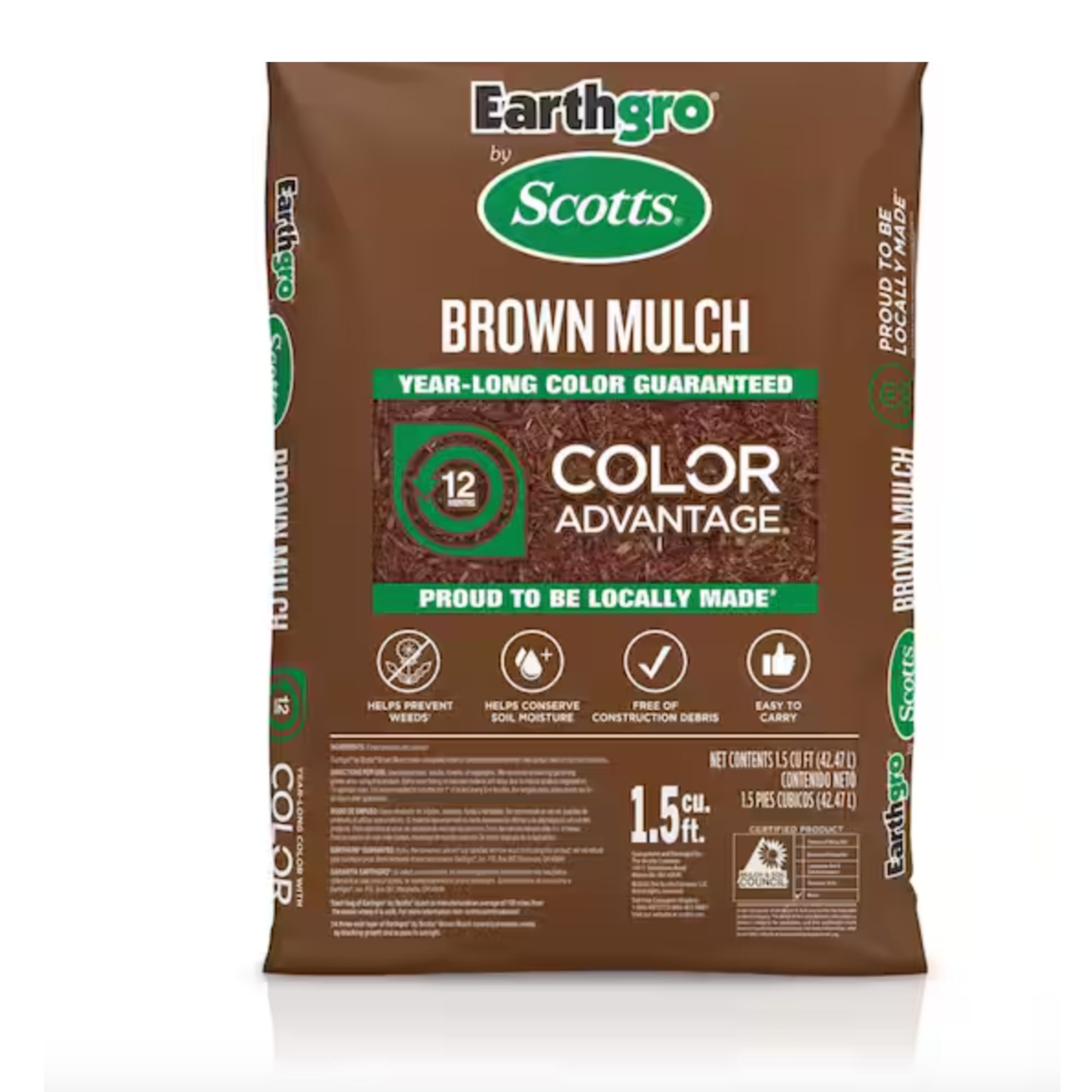
Price: $3.97
Earthgro by Scotts Brown Mulch uses Scotts Color Advantage to provide year-long color, which is guaranteed! It's made from forest products to help conserve soil moisture, moderate soil temperature and prevent weeds naturally by blocking growth and access to sunlight when applied at a 3 in. depth.
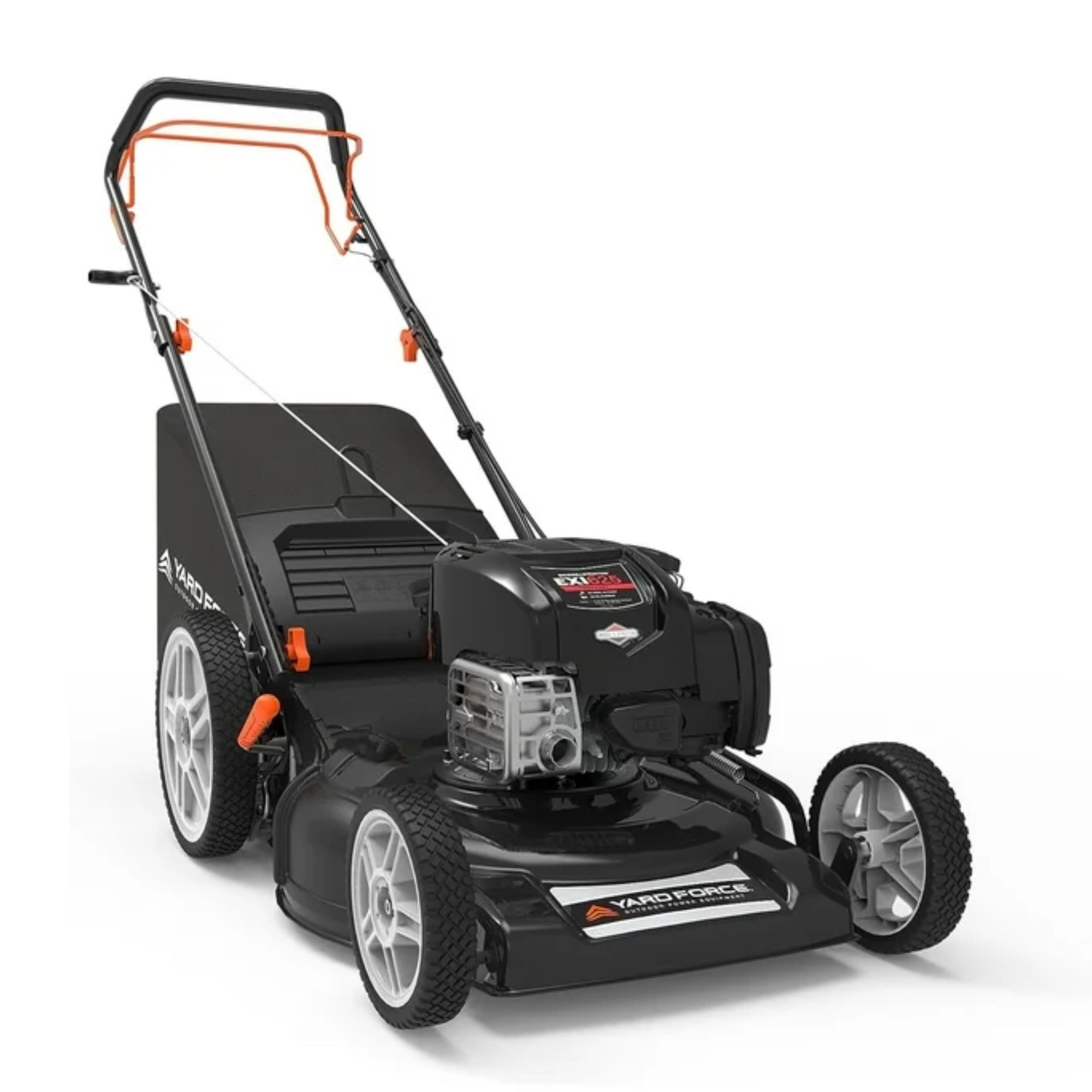
Price: $389.97
The Yard Force 22 Inch Steel 3 in 1 Push Lawn Mower has lots of gadgets to make it easy to use. The 2 steel deck converts from rear-bagging to mulching to side discharge. The 7-position single lever adjusts the height of the cut from 1.25 inches to 3.75 inches. A self-propelled drive is essential for yards with hills and slopes of all degrees to maintain a consistent cut and is safer while providing more control during operation.
Gardening jobs to do in April
April is a transitional month that can often bring unpredictable weather, so these monthly gardening tasks are largely dependent on rain or shine.
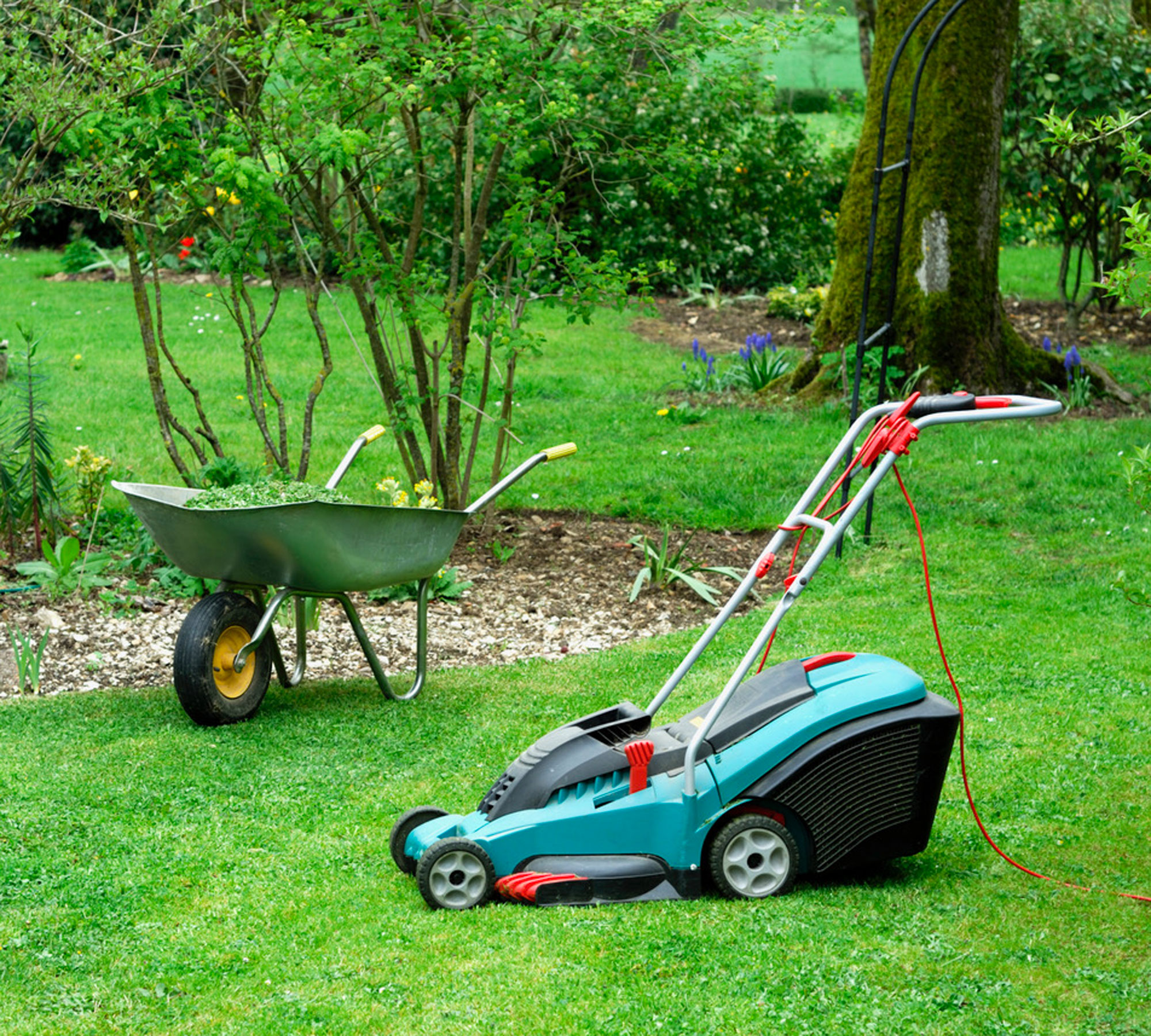
Plant
What can be planted in April? As a general rule, this is the time for planting up. Fill your beds with colour using pansies, tulips (they will soon spring up) and marigolds.
Sow tomatoes, runner beans, basil, green pepper, marrow, courgettes and sweetcorn in individual modules undercover for planting after the frost.
April is the best time for container gardening. If there’s space, pot plug plants into larger pots – it’s cheaper than buying bigger pot plants in a month’s time.
Forward plan ahead of the summer. Plant up summer baskets and grow undercover before positioning in late May. Sow half-hardy bedding plants in seed trays or cell trays undercover.
Maintain water features
If you have a water feature in your garden, now is the time to give it its annual round of post-winter maintenance. Clear out ponds: take out planting baskets and fish (keep in buckets of old pond water), bail out the water, remove sludge and refill. Rainwater is best, but let tap water stand for a week before putting fish back in. Plant new pond plants using special pond baskets from garden centres.
Protect
The point has come in the yearly gardening calendar to start looking out for early pests and diseases – hit them hard now to avoid problems later on.
Use fine Environmesh to protect young carrots from carrot root fly.
April can still bring freezing nights, so protect tender flowers and vegetables from late frosts – keep horticultural fleece on standby. Young, upright-growing plants will need some form of support: stake tall perennials such as delphiniums and sunflowers with ‘grow through’ supports.
Gardening jobs to do in May
May is when the garden really begins to wake up – and it's the time to gear up the gardening jobs for the summer.
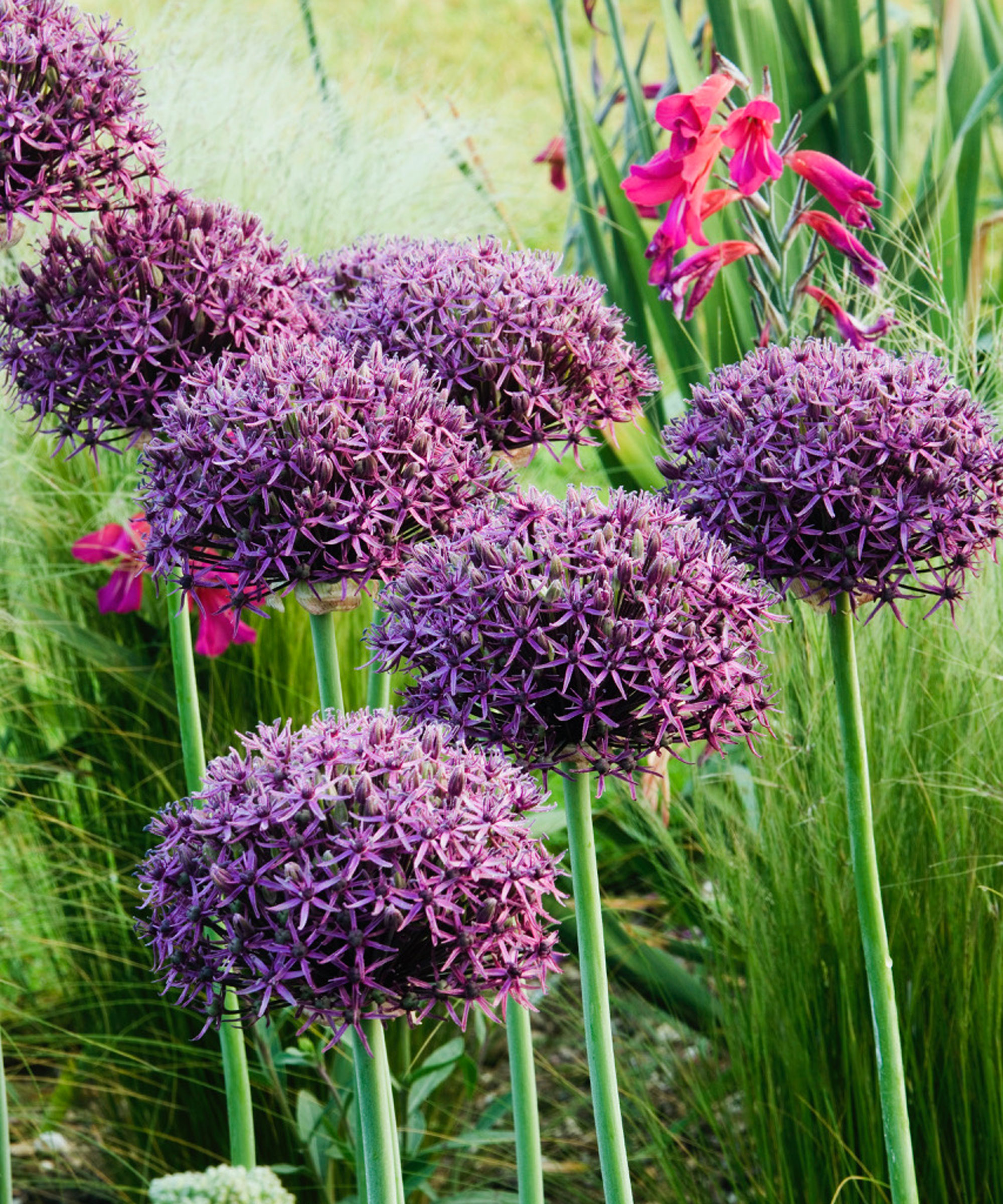
Lawn care
Now's the time for active lawn maintenance – and the last chance to sow or lay new lawns until autumn without using sprinklers. The lawn will need weekly mowing from now until autumn, and the edges will need trimming.
Planting
Now the soil is warming, it’s time to consider what to plant in May
Pay special attention to grow your own tender vegetables and soft fruit. The end of the month is the best time to plant out tender courgettes and aubergines if you have a kitchen garden, as well as planting our summer bedding plants.
Repot pot-bound container plants in pots 7-10cm bigger than the current ones. Remember to tie in long climber shoots to their supports with soft string.
Protect
With insects becoming much more active as temperatures rise, be especially vigilant about pests. Pick off scarlet lily beetles from your lilies; their larvae rapidly defoliate plants. Watch for vine weevil in container plantings – irregular-shaped notches to leaf edges are tell-tale signs. The young grubs in the soil eat roots, and fast. Use natural nematodes to control them. at the end of the month.
Cover soft fruit bushes with netting to prevent birds from eating the fruit, and if you are growing strawberries, put straw around or under them.
“Pay attention not only to what insects you can see in the soil around your plants but also to how healthy your growing plants look," says Brett Bennett, Director of Operations, PURCOR Pest Solutions.
Things like holes in leaves or yellowing can indicate pest problems. You want to handle those problems quickly so that your plant growth isn’t stunted.”
Prune
Don't forget about the plants that have just finished flowering; prune spring-flowering shrubs.
Feed
Feed spring bulbs with Growmore or blood, fish and bone. For advice on organic gardening take a look at our guide.
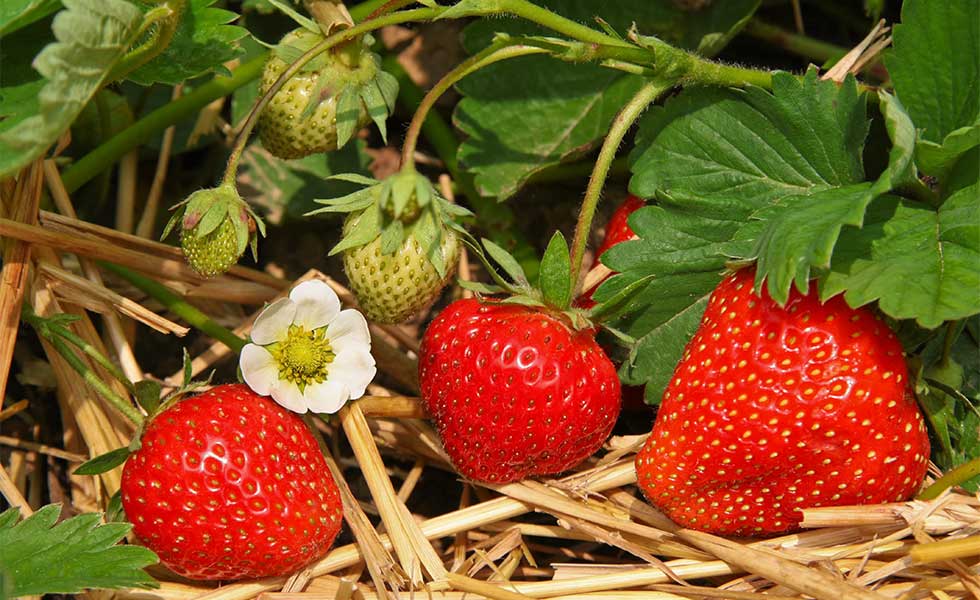
Gardening jobs to do in June
June is all about regular, consistent maintenance of your plants; in short, remember to weed, water and feed your plants, and do it often.
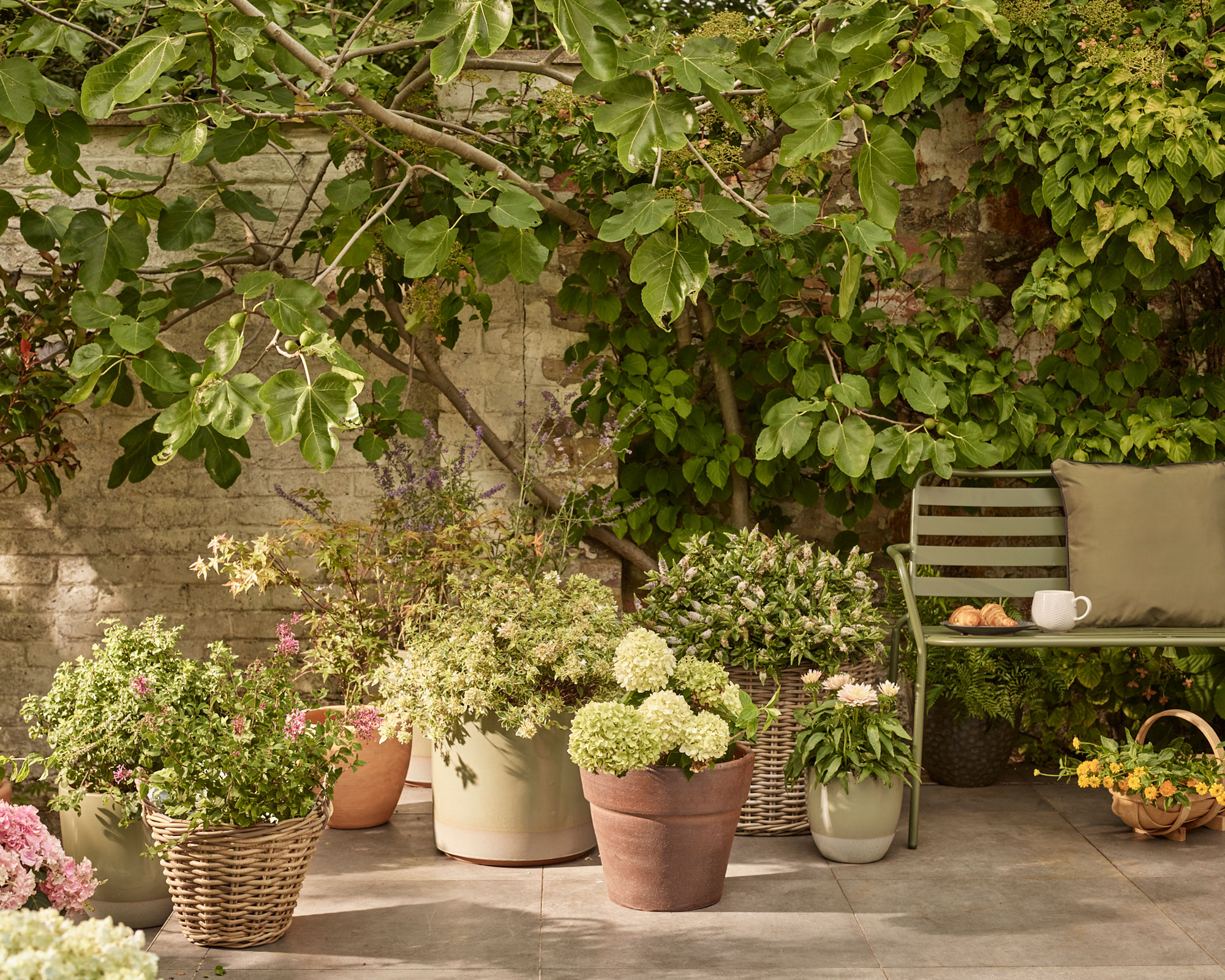
Deadhead
Deadhead early bloomers, such as clematis, roses, marguerite daisy bushes and peonies.
“Removing spent flowers in early summer can result in a second bloom, or at the very least, can help prepare your perennials for a healthy bloom next year,” says Ryan Farley, CEO of LawnStarter

Ryan Farely co-founded LawnStater, a successful online marketplace for customers to order and manage outdoor home service needs all over the United States.
Feed
Pay special attention to container plants, bedding plants and veggies. Liquid-feed tubs and baskets every two weeks if you haven’t already mixed in controlled-release fertiliser.
Feed tomatoes, peppers and aubergines with a high-potash feed such as Tomorite every two weeks (also useful for feeding pelargoniums).
Harvest
The gardening jobs calendar marks June as the time for harvesting onions – the right time is when the leaves turn yellow.
Tomatoes should begin start to ripen, although timing depends on variety and conditions. Smaller cherry tomatoes will ripen more quickly if in greenhouses and will continue producing crops through to autumn.
Gardening jobs to do in July
July is a busy time of vigorous growth and flowering – and for the gardener, this is the time for properly managing all that growth.
Like last month, weed, feed and dead-head as and when needed.
Continue vigilant weed control. Up the feeding: seasonal patio displays and baskets will do well with a weekly dose of liquid tomato fertilizer.

Deadhead
Deadhead bedding plants to encourage more flowers; cut back delphiniums and geraniums after the first flowers to encourage a second flowering, then feed with Blood, Fish and Bone. Tie in vigorous climbers firmly to their supports.
Water
July often brings the hottest summer weather, so up the water for the plants that need it. Bedding plants, leafy vegetables, seedlings and new plantings are most prone to drying out. Ideally, water your plants early in the morning or in the evening; avoid watering during the hottest part of the day.
Prune
Shrubs, hedges, flowering climbers and fruit trees all flourish during warmer months so if you are considering what to prune in summer. It’s a good idea to keep an eye on them to ensure they don’t become out of control or top heavy.
Protect
Some pests thrive in hot summer conditions, so check susceptible plants – such as roses – for blackspot, mildew and rust, which can be rife right now.
Maintain water features
Water features will need care, too: use a rake to thin out any overgrown oxygenating plants and algae from ponds. Top up ponds in hot weather, ideally with water-butt water.
Lawn care
If it’s dry, stop mowing the lawn, or, if possible, raise the height of the cut. Brown patches in hot spells are inevitable but the lawn will quickly recover, so there’s no need to water.

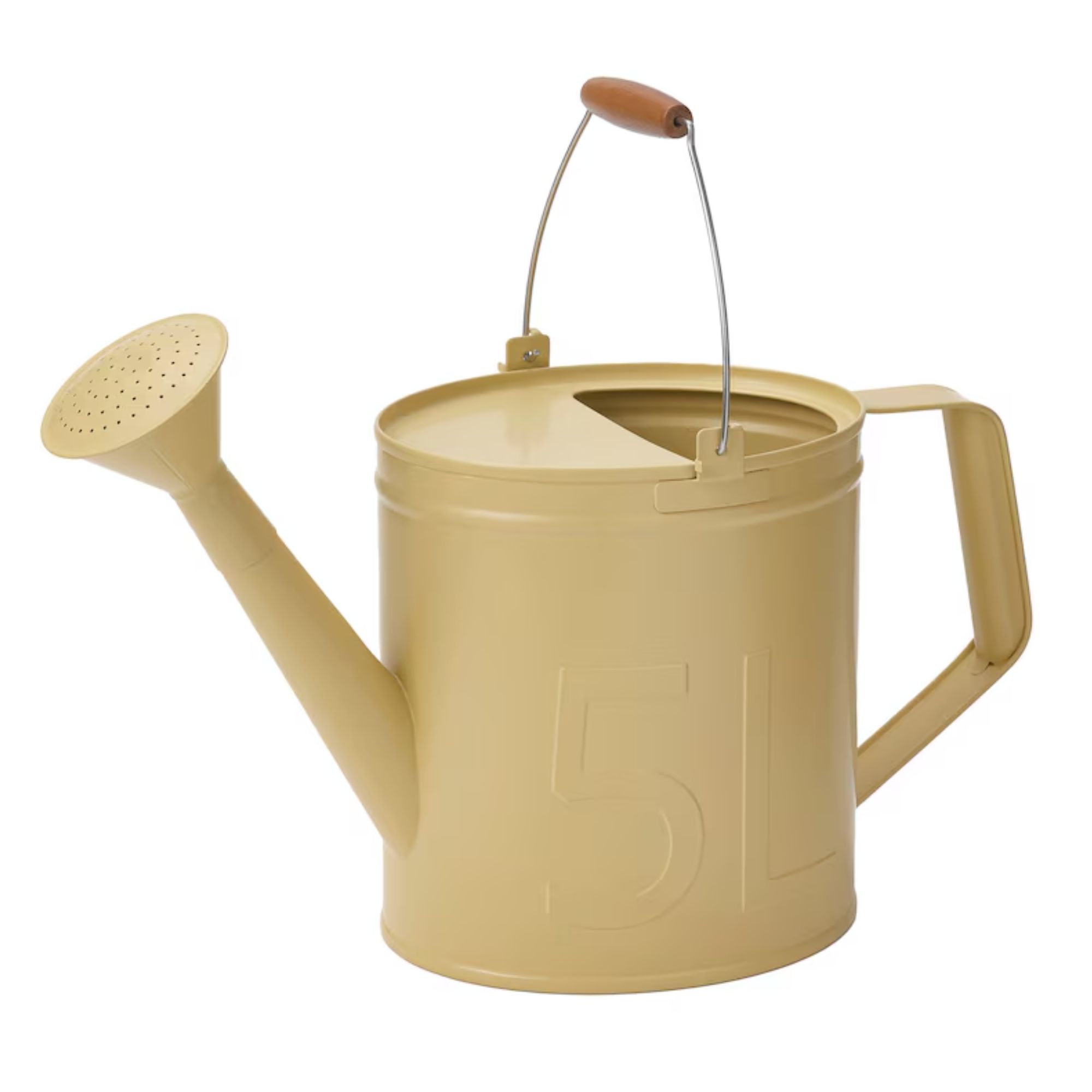
Price: $14.99
Easy to fill and carry when full, this pretty butter-yellow watering can get you ready for the growing season. Scoring 4.8 out of 5 stars, customers like how this stylish watering with a wooden handle can lightly shower the soil without displacing it.
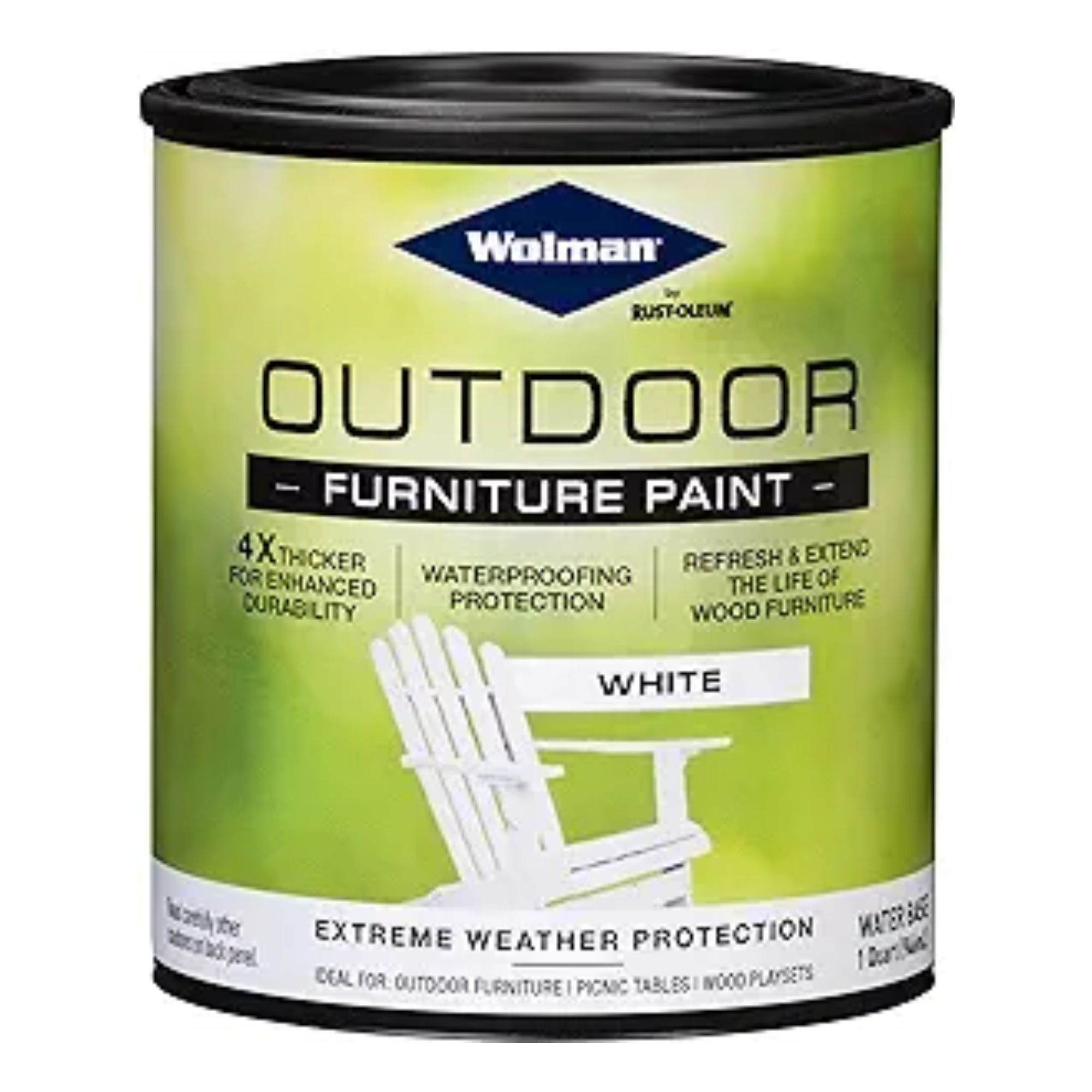
Price: $18.93
Volume: 32 Fl Oz
This outdoor furniture paint protects exterior wood furniture and is said to be 4 times thicker than other outdoor paints. it dries to the touch in 2-4 hours and covers approximately 20 sq. ft. per quarter. Two coats are recommended.

Price: $37.48
Create a touch of shade or privacy with a smart garden trellis. Ideal for climbing plants this brown wood garden structure allows blooms to grow up. 4.2 out of 5 stars customers report that although basic, the design is pretty.
Gardening jobs to do in August
August is the first harvest month in the gardening calendar; it is also the time to begin tidying up your garden as the early-summer-growing plants begin to finish flowering and collapse.
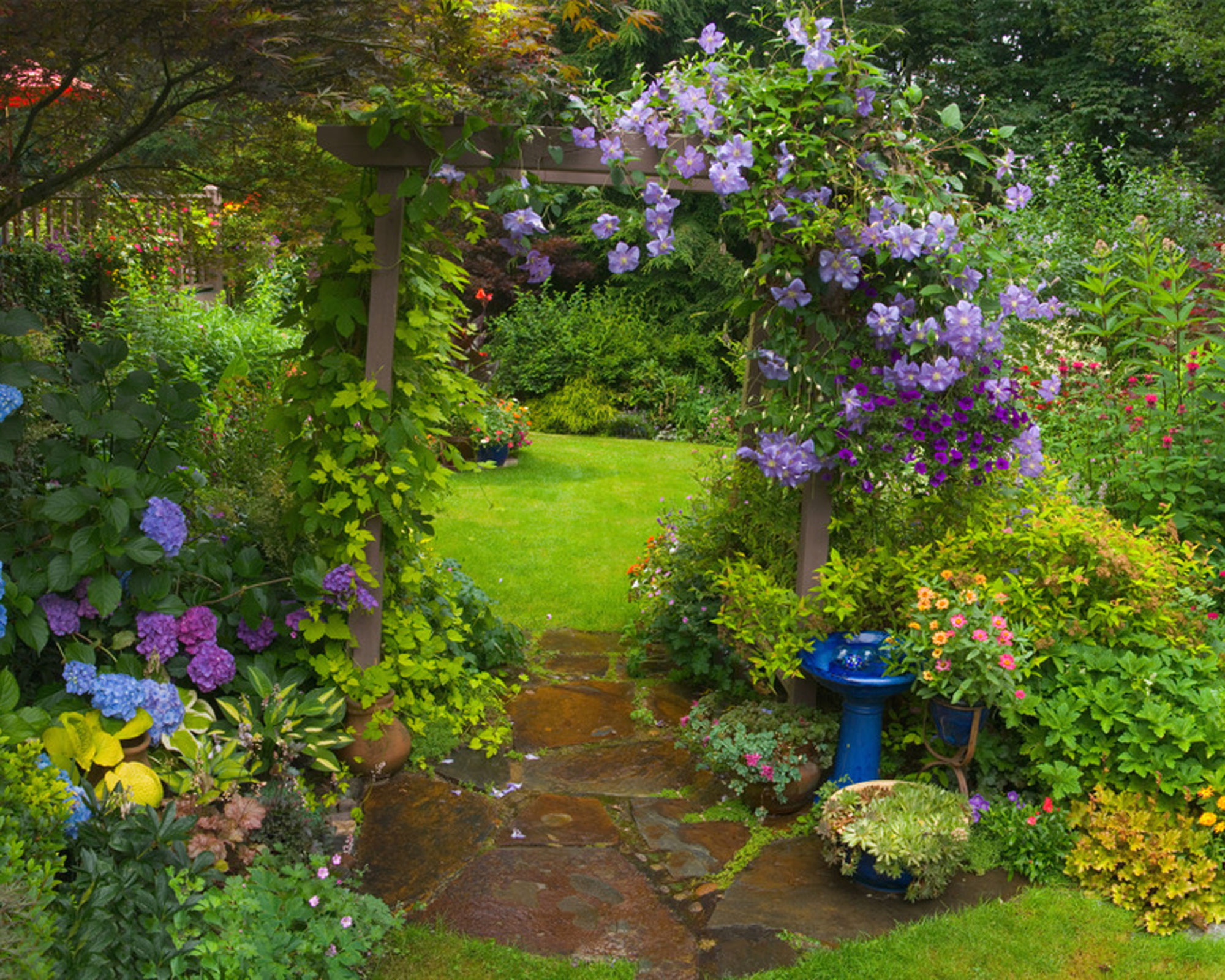
Harvest
Now is the time to pick sweetcorn, tomatoes, peas, beans, marrows, pumpkins, artichokes and glasshouse crops such as chillies and aubergines. Push straw or old tiles under ripening squash and pumpkins to stop rotting on the soil surface.
Protect
Tie in tall late-summer perennials in your cutting garden, such as agapanthus, dahlias and phlox, to stop them from flopping over.
Prune
Lavender and rosemary will have finished flowering by now, so lightly trim them gently to shear the new soft growth, but don’t cut into the older brown wood.
Likewise, trim off foliage from strawberries once they've finished fruiting.
In the middle of the month stop outdoor tomatoes by pinching out the uppermost terminal shoot.
Water
Water in dry spells in the morning or evening from a water butt or by re-using lightly used bathwater, also know as gray water.
Lawn care
This is peak grass growing season so, mow the lawn at least once a fortnight as needed. Raise the blades if the weather is hot and dry to stop the sward from turning brown.
Gardening jobs to do in September
September can be a time of relative peace for the hardworking gardener: generally, there are fewer gardening jobs to do during this month than in other months, apart from collecting seeds from summer-flowering plants. A crucial autumn gardening job is knowing when to harvest.
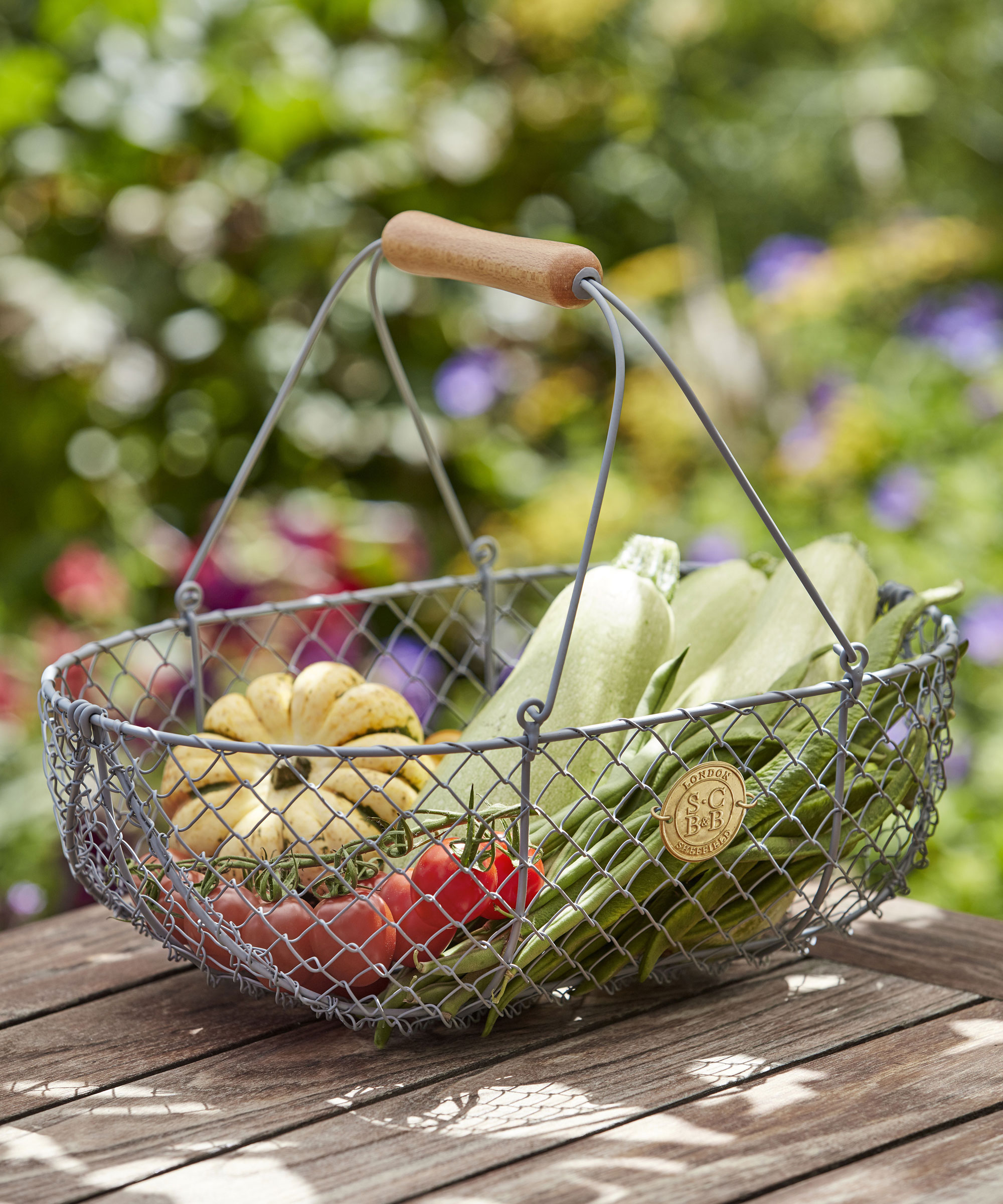
Maintain water features
For gardens with water features, now is the time to cover ponds with netting to prevent water-logging during leaf fall in the autumn.
Harvest
In a kitchen garden, now is the time to enjoy the rewards of your hard work and pick your vegetables and fruit; remember to dig up any remaining potatoes, otherwise they will be destroyed by slugs.
Protect
Cover any tender salad leaves with bird netting, and pick late-fruiting raspberries and blackberries.
Mow less frequently and raise the height the lawn mower blade as grass growth rate starts to slow down.
If grass needs a boost apply an autumn lawn-feed.
Gardening jobs to do in October
October is the time in the gardening jobs yearly calendar to start tidying up and preparing for winter in earnest, while still enjoying the harvest.
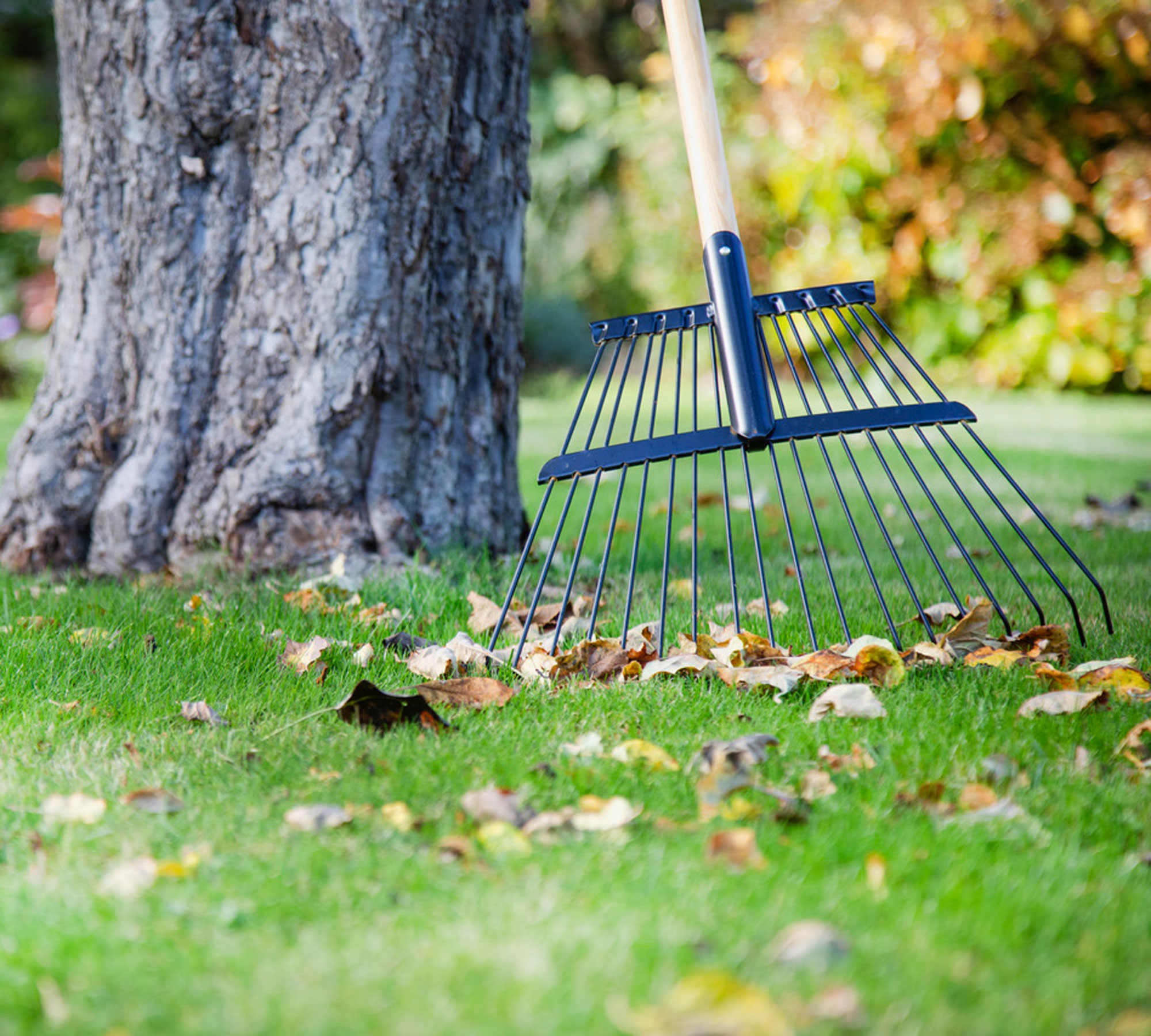
Harvest
If you have apple or pear trees, now is the time to pick the fruit.
Protect
Move any tender plants, including houseplants, into a conservatory or greenhouse – don't forget to check that any heaters you have are working properly.
Container gardeners should remove any drip trays and raise terracotta patio pots with bricks or ‘pot feet’ (from garden centres) so they don’t sit in water over winter and crack when they freeze.
Stop all feeding, as your plants are slowing down for the winter.
Plant
For pots and boarders full of fragrant colour in the spring now is the time to plant out your flower bulbs. Snowdrops, alliums, daffodils and Hyacinths are just some bulbs to plant in autumn.
Continue planting spring bulbs throughout the month, but leave tulips until November.
Tidy
Fallen leaves are an important natural resource, so don't simply discard them: clear up fallen leaves into black bin bags or create a separate pile next to the compost heap to make leaf mould ready for next October’s soil conditioning.
Gardening jobs to do in November
Autumn is probably the busiest period in the gardening calendar. Think of it as getting your garden ready for bed. Winter months will see plants and trees go into dormancy in order to rejuvenate in time to wake again in spring.

Plant
Plant up bare-root trees and shrubs throughout November.
To enjoy some colour during the winter, plant up tubs and baskets with evergreen perennials, ornamental grasses, winter pansies, winter roses and polyanthus.
Protect
Trees over 1m will need staking for support, especially in exposed locations.
November is a rainy and windy month, and frosts are not uncommon.
Protect your rose garden from wind rock by pruning them, and protect any container plants in non-frost-proof pots by wrapping bubble wrap around them.
Garden furniture will need protecting at this time of year, too – cover any wooden pieces, or move them into sheds and garages.
Lawn care
November is the last chance to create new lawns from turf; choose a dry day when the soil’s not frozen or waterlogged.
Preparation
It's also the time to dig over your veggie patch; leave soil in large clumps and let the weather break it down into a crumbly finish
Gardening jobs to do in December
As the year draws to its close, and the days are at their shortest, limit gardening work to protecting tender plants and aiding wildlife in your garden.
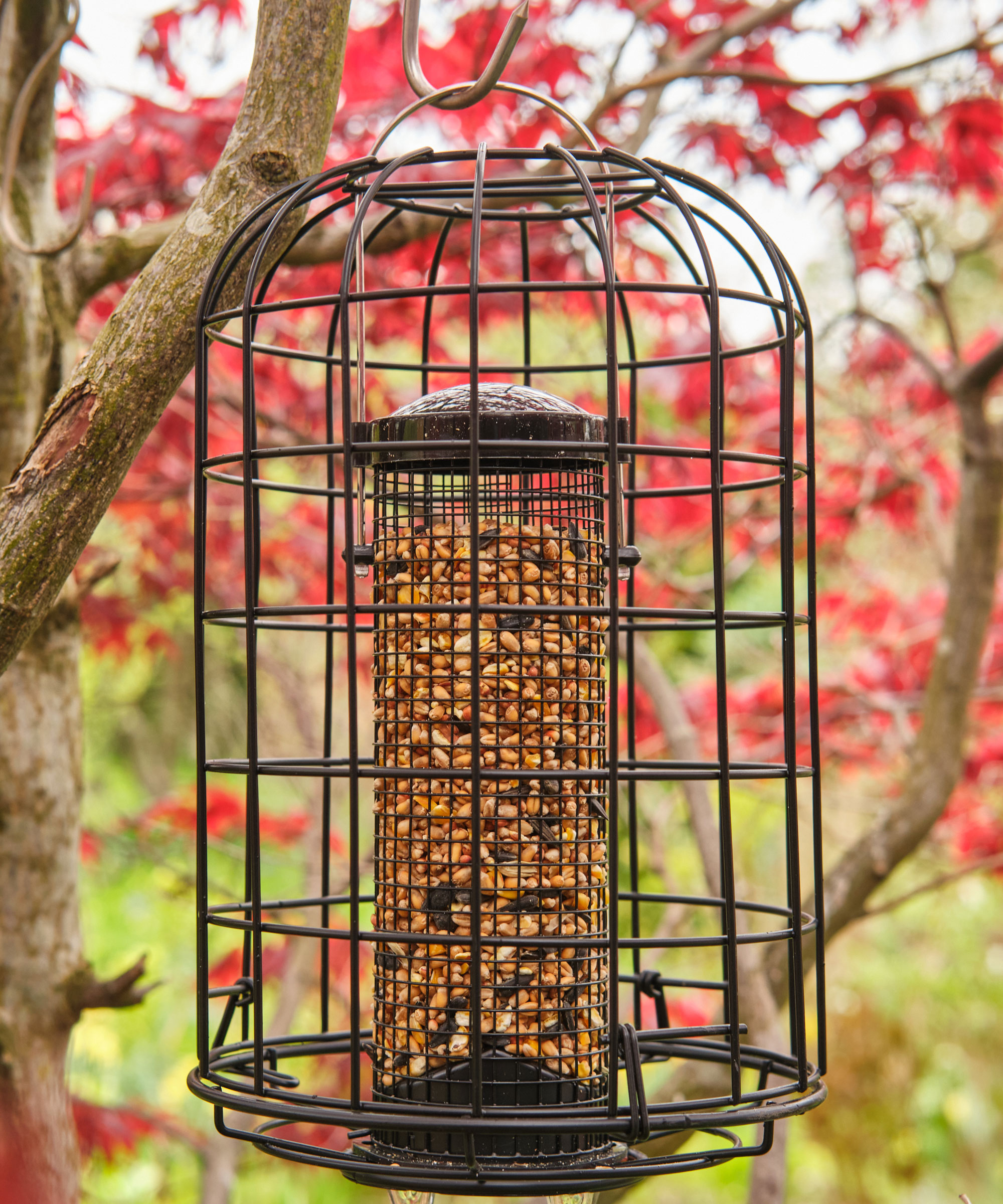
Feed
Ensure your wildlife garden is fully stocked during winter months. Keep bird feeders topped up and make water available.
Water
Although it makes sense to water plants sparingly at this time of year, do make sure that container plants don't dry out completely.
Protect
Protect tender palms and tree ferns: Insert a few handfuls of straw into the crown, tie up the leaves or fronds, and then wrap the whole plant in horticultural fleece, tying it off securely at the bottom. Don’t use plastic sheeting or bubble wrap as on warmer days your plants will sweat and rot.
Indoors, keep houseplants happy by moving them away from radiators and into a sunny, cool spot.
Preparation
While tools are down, now is a good time to clean, repair or replace any garden tools and equipment ready for use next year.
“In colder conditions, less work will be needed in the garden, therefore, it’s a great time to service/maintain any garden tools ready for when spring comes back around,” confirms Chrissie Handley, lawn care specialist at Onlineturf

Chrissie Handley is a lawn care specialist working for Online Turf. With extensive expertise in turf-laying, grass maintenance & seasonal gardening advice, she is dedicated to helping gardening enthusiasts achieve lush, healthy lawns year-round.
Growing a garden is a rewarding and satisfying hobby. But, if not maintained can soon become overwhelming. By breaking down gardening jobs month by month it’s easy to keep on top of chores and establish successful garden landscaping ideas all year round.
Join our newsletter
Get small space home decor ideas, celeb inspiration, DIY tips and more, straight to your inbox!
Laura Crombie is a journalist and TV presenter. She has written about homes and interiors for the last 17 years and was Editor of Real Homes before taking on her current position as Content Director for Country Homes & Interiors, 25 Beautiful Homes Period Living and Style at Home. She's an experienced home renovator and is currently DIY-renovating a 1960s house in Worcestershire. She's been quoted on home design and renovating in The Times, The Guardian, The Metro and more. She's also a TV presenter for QVC and has been a commentator for Channel 4 at Crufts dog show.
-
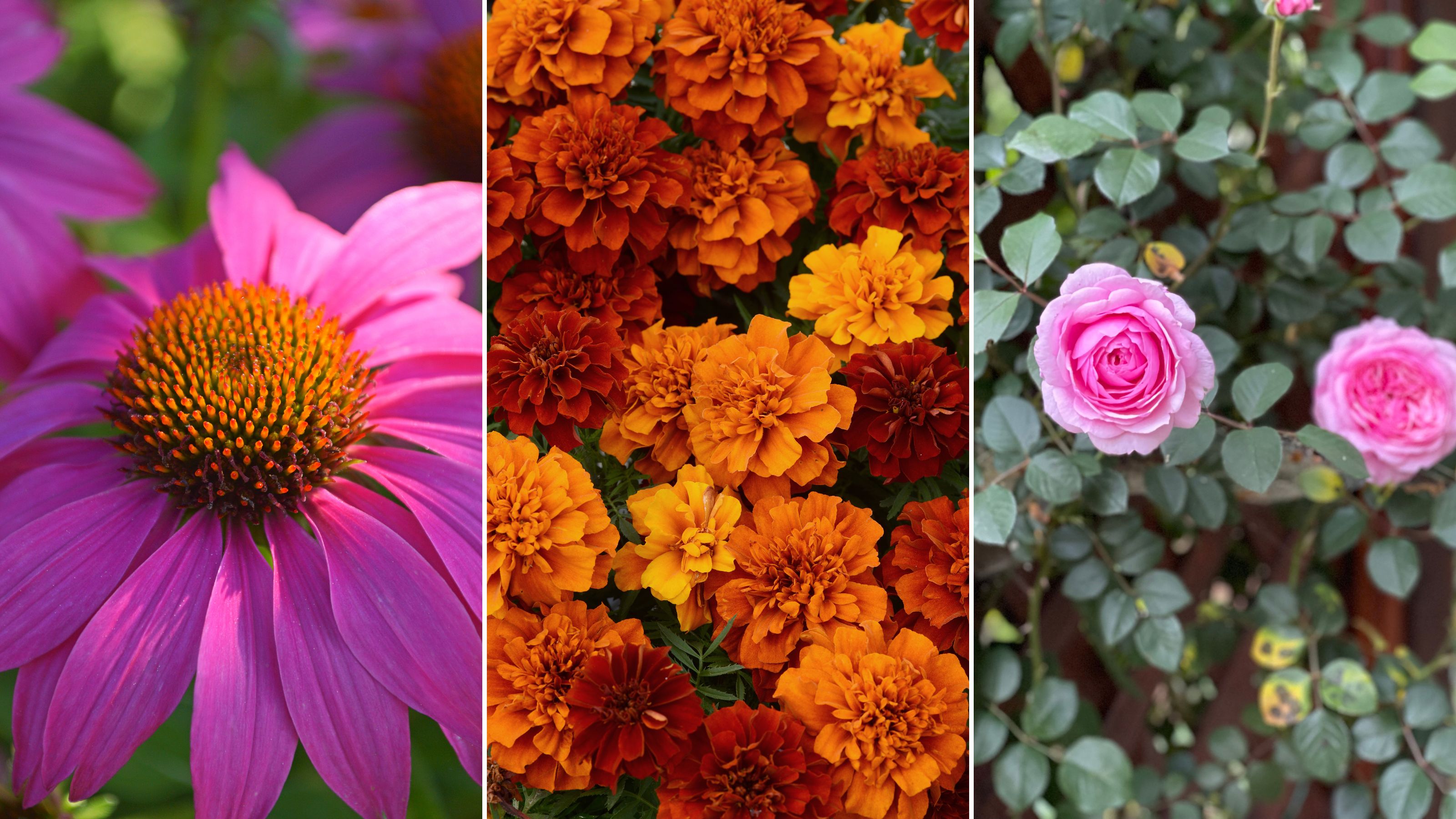 The 7 flowers to plant in August, according to gardening gurus
The 7 flowers to plant in August, according to gardening gurusKnowing what flowers to plant in August isn't always so clear-cut. But that's why we called in help from pro planters — here's what they said to pot.
By Becks Shepherd Published
-
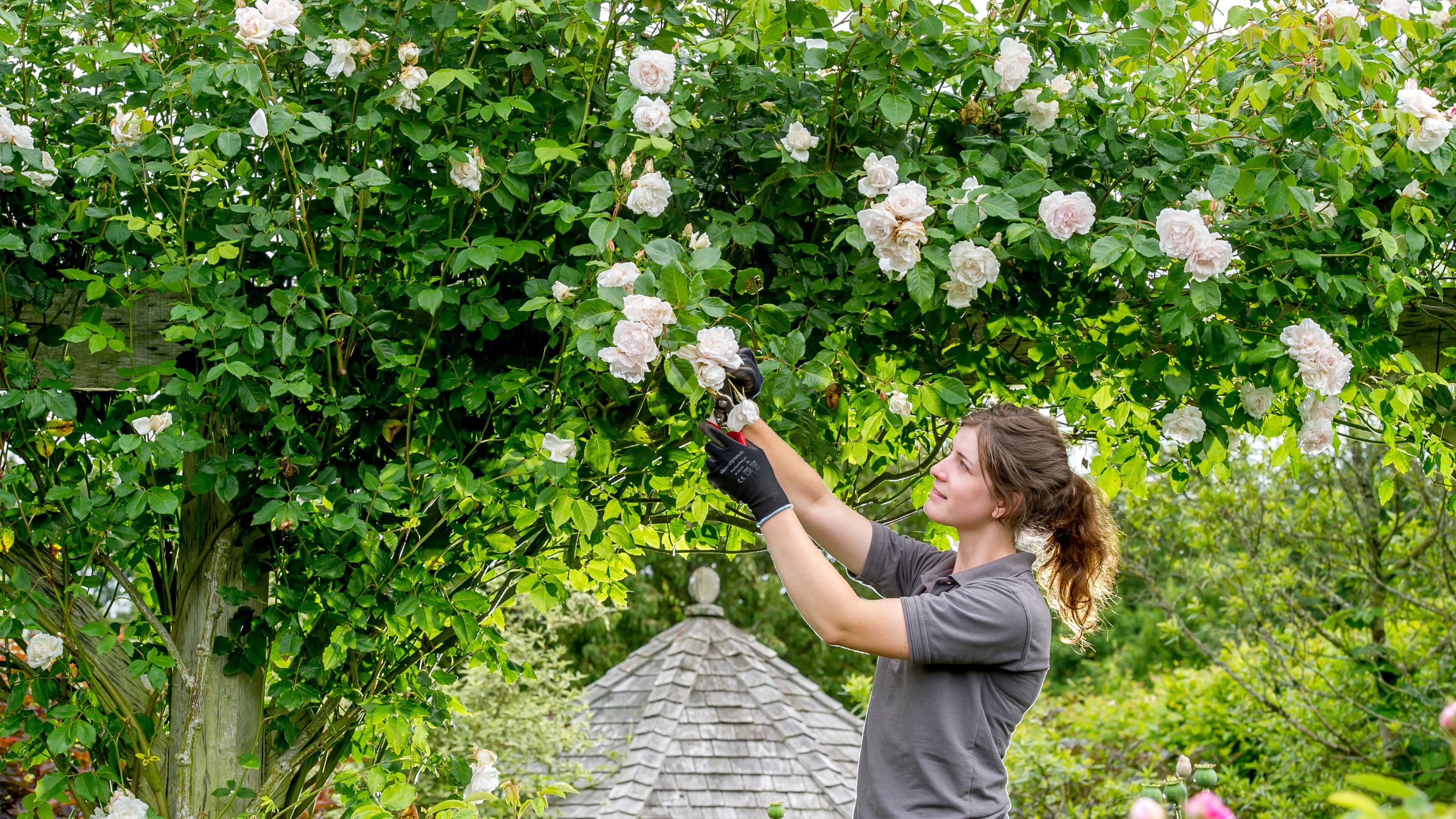 The 7 plants to prune in August — and the 2 pieces of greenery you shouldn't touch
The 7 plants to prune in August — and the 2 pieces of greenery you shouldn't touchWondering what plants to prune in August? We asked a gardening expert for their top tips plus info on what pieces of greenery to avoid pruning this month
By Becks Shepherd Published
-
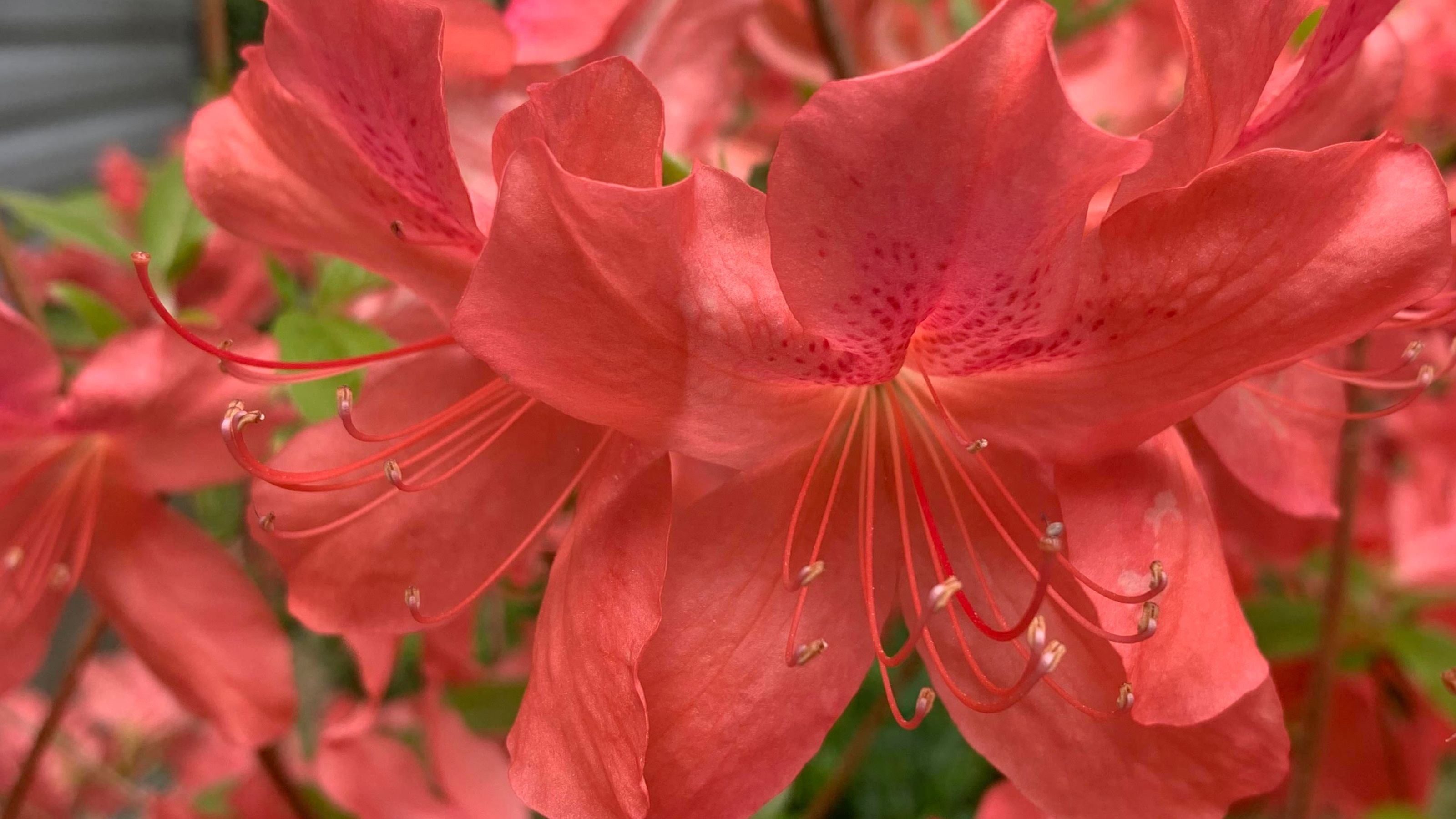 Do you need to deadhead azaleas? Top tips for pruning these flowering shrubs
Do you need to deadhead azaleas? Top tips for pruning these flowering shrubsWondering whether you need to deadhead azaleas? We asked a gardening expert for their top tips for looking after these blooms
By Becks Shepherd Published
-
 10 houseplants that are not toxic to cats — plus expert advice on keeping your pets safe
10 houseplants that are not toxic to cats — plus expert advice on keeping your pets safeKeep your four-legged companion safe by choosing these houseplants that are not toxic to cats, and learning the dangers of those that are, according to veterinary experts
By Holly Crossley Published
-
 Which houseplants are toxic to dogs? Vet experts pinpoint problem plants and solutions
Which houseplants are toxic to dogs? Vet experts pinpoint problem plants and solutionsWondering Which houseplants are toxic to dogs? We spoke to vets about the problematic leafy greens, what they trigger in dogs, and how to find a solution
By Danielle Valente Published
-
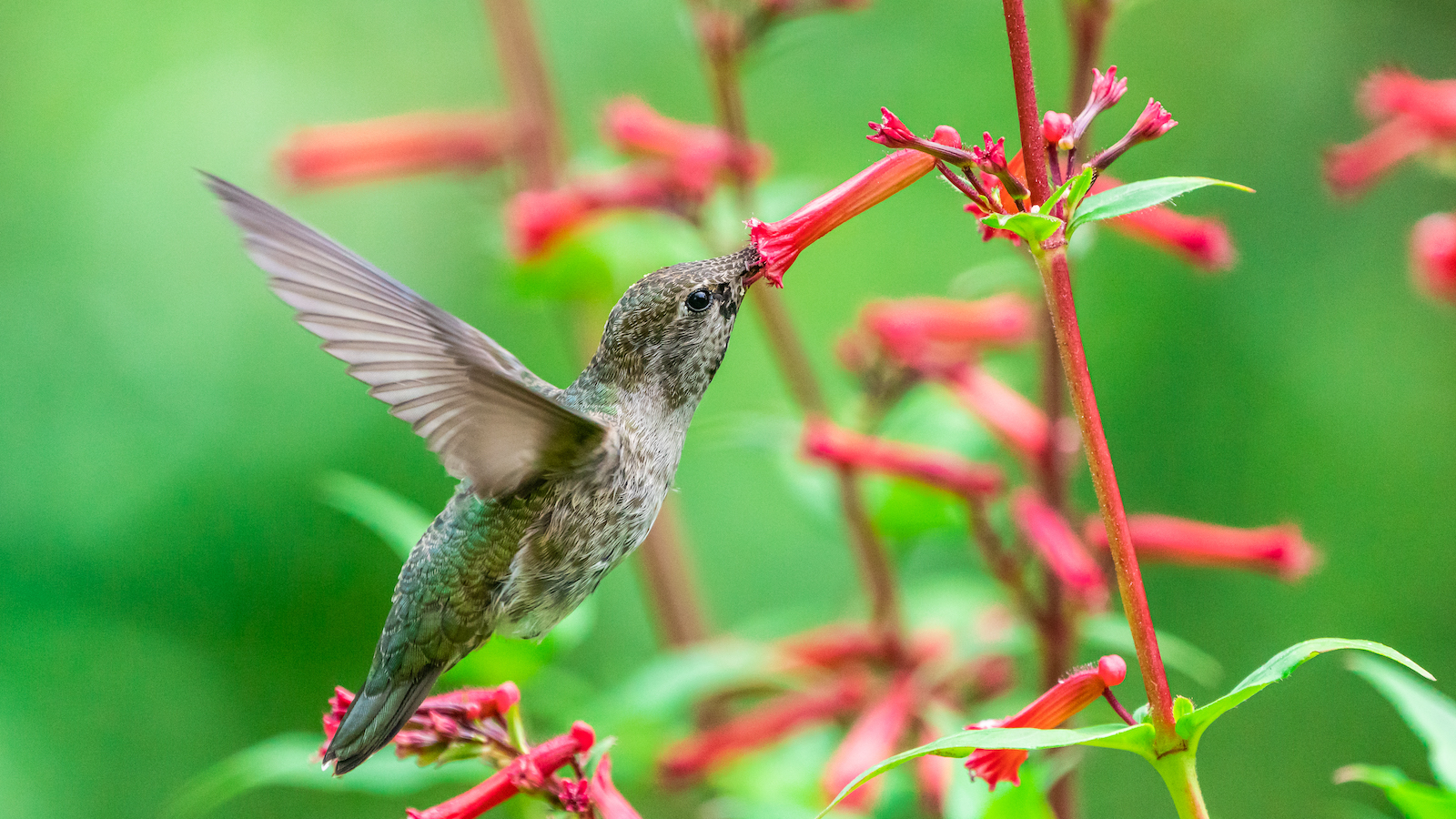 How to attract hummingbirds to your backyard, according to ornithologists
How to attract hummingbirds to your backyard, according to ornithologistsTrying to figure out How to attract hummingbirds to your backyard? These ornithologist-backed tips will guarantee you visitors in no time
By Danielle Valente Published
-
 Does hydrangea bloom every year? Pros spill the dirt on the "garden favorite" and when to expect it
Does hydrangea bloom every year? Pros spill the dirt on the "garden favorite" and when to expect itWondering, "Does hydrangea bloom every year"? We asked the pros all about the garden favorite and how often to expect them — here's the dirt.
By Danielle Valente Published
-
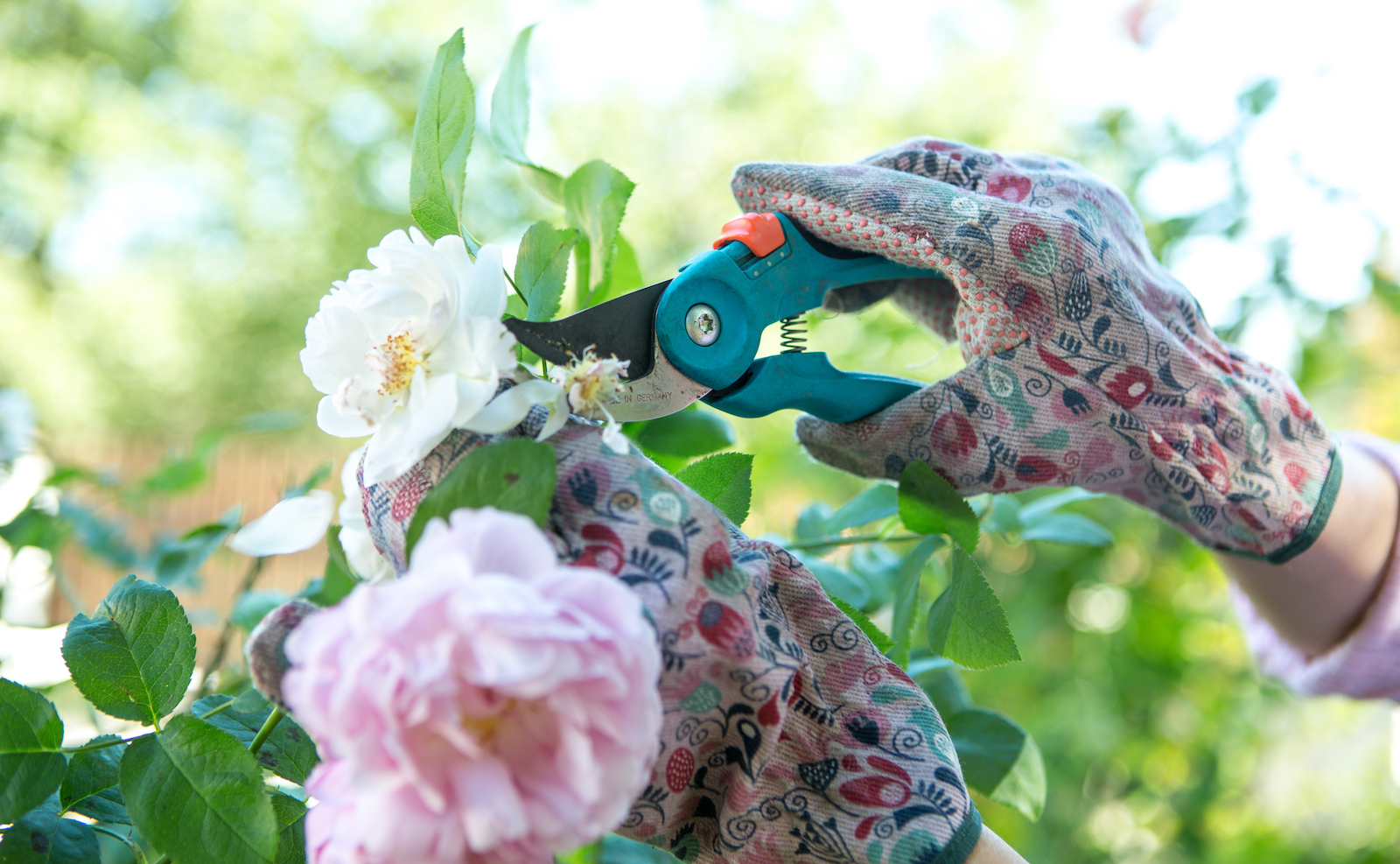 What to prune in spring — experts reveal how to get a lush, full garden
What to prune in spring — experts reveal how to get a lush, full gardenCurious what to prune in spring? We asked gardening experts for their top tips for a luscious, thriving garden
By Danielle Valente Published